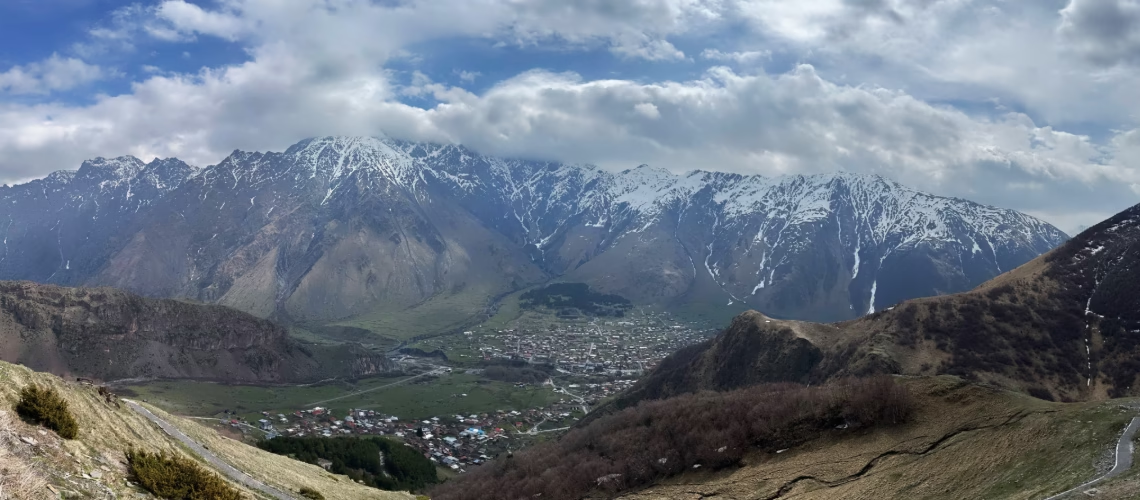Table of Contents
Travel Dates: April 29 – May 5, 2025
Educational Trip Hosted By: Turkish Airlines and Georgia Tourism Board
Report by: Frey Soares
Georgia—the country, not the state—is a place where history, mountains, monasteries, and melt-in-your-mouth cheese bread all converge in one unforgettable journey. I recently joined an educational trip that took us from the skies aboard Turkish Airlines to the hilltops of ancient cathedrals and the heart of Georgian winemaking country. Here’s everything I experienced, from luxurious flights to cultural discoveries that stole my heart.
Flying in Style with Turkish Airlines Business Class
I flew Alaska Airlines to Seattle on Tuesday, April 29. Nothing too remarkable there—except that Seattle Airport is currently undergoing construction, so finding the international ticketing area was a bit of a trek and not very clearly marked. If you’re flying Turkish Airlines, their check-in counter is all the way at the far end of Zone 1.
Once through security, I was able to access the business class lounge at the S Gates. It’s located on the second floor and is super spacious with plenty of seating, a generous spread of food catering to various dietary needs, and an open bar (cheers to that!).
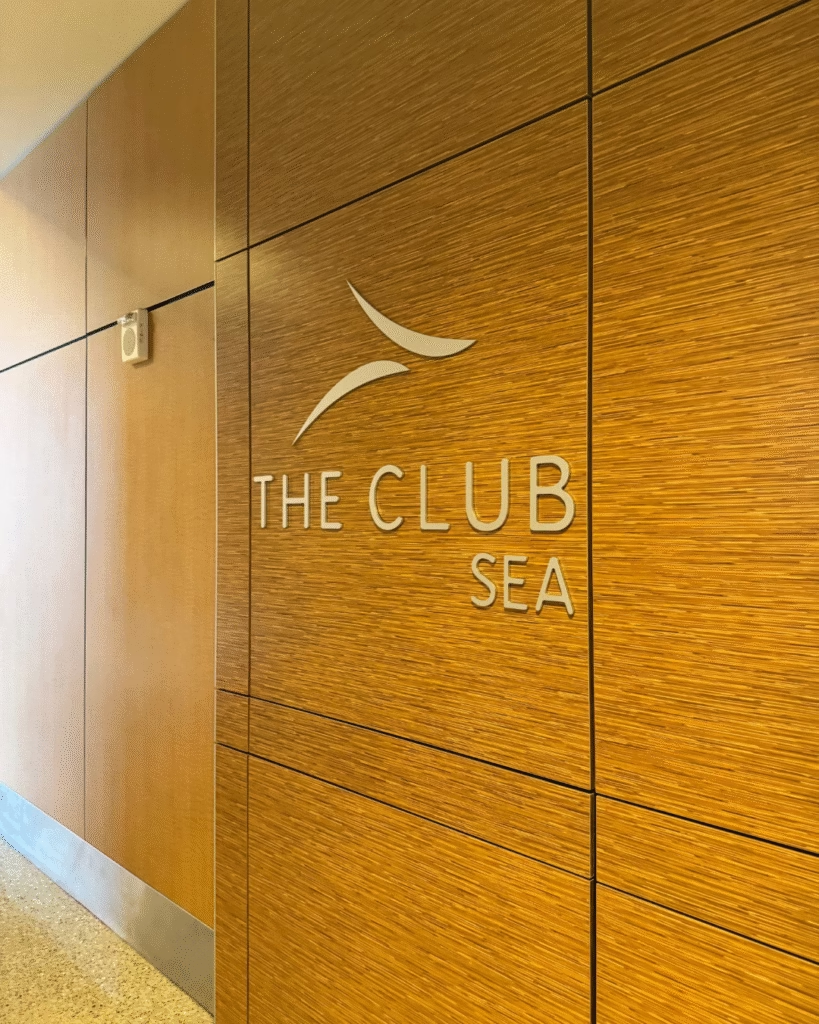
A small but humbling moment: I didn’t realize business class comes with priority boarding, so there I was, standing in the general boarding line like a total newbie. Lesson learned!
Once onboard, I was absolutely floored by how luxurious Turkish Airlines’ business class cabin was. I lucked out with a private window seat (fun fact: the even-numbered seats on the sides are the most private, you’re not sitting directly next to anyone). Just minutes after settling in, the crew came around with hot towels, a drink service (alcohol starts after takeoff due to local regulations), and a chic amenity kit from Lanvin. Inside were earplugs, a toothbrush and toothpaste, hand cream, lip balm, a hair tie, socks, and a super comfortable eye mask.
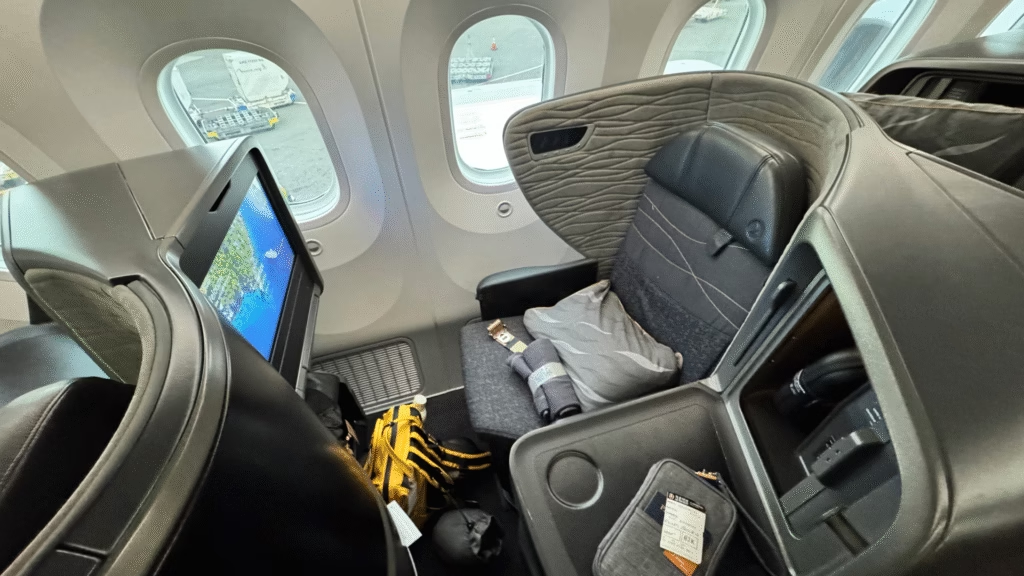
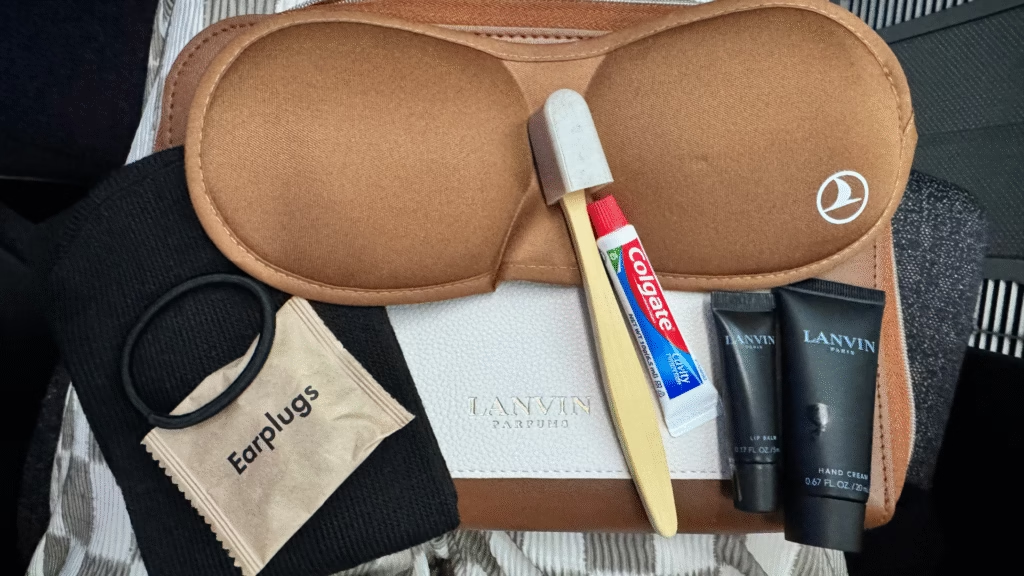
The seat itself was cozy, equipped with a plush pillow, thick quilted blanket, and reclined into a fold-out bed. There was enough space to stretch out completely, and I loved the thoughtful extras like a shoe bag and oversized slippers (comically huge for my small feet, but hey, I’m a slippers-on-plane person now—no regrets). To my left was a cocktail table with built-in storage and high-quality noise-canceling headphones that connected to an 18” entertainment screen.
There were tons of movies, shows, music, and even flight cameras offering front and underside views of the plane. I kept the camera feed running when I wasn’t watching anything else, it was surprisingly soothing. About 45 minutes after takeoff, dinner service began with a sweet little touch: an electric candle and a tablecloth to set the mood. A bread plate came with olive oil, seasoning, butter, and adorable salt & pepper shakers. With an actual chef onboard and Halal-prepared meals, everything looked and tasted phenomenal. Easily the best airplane food I’ve ever had!
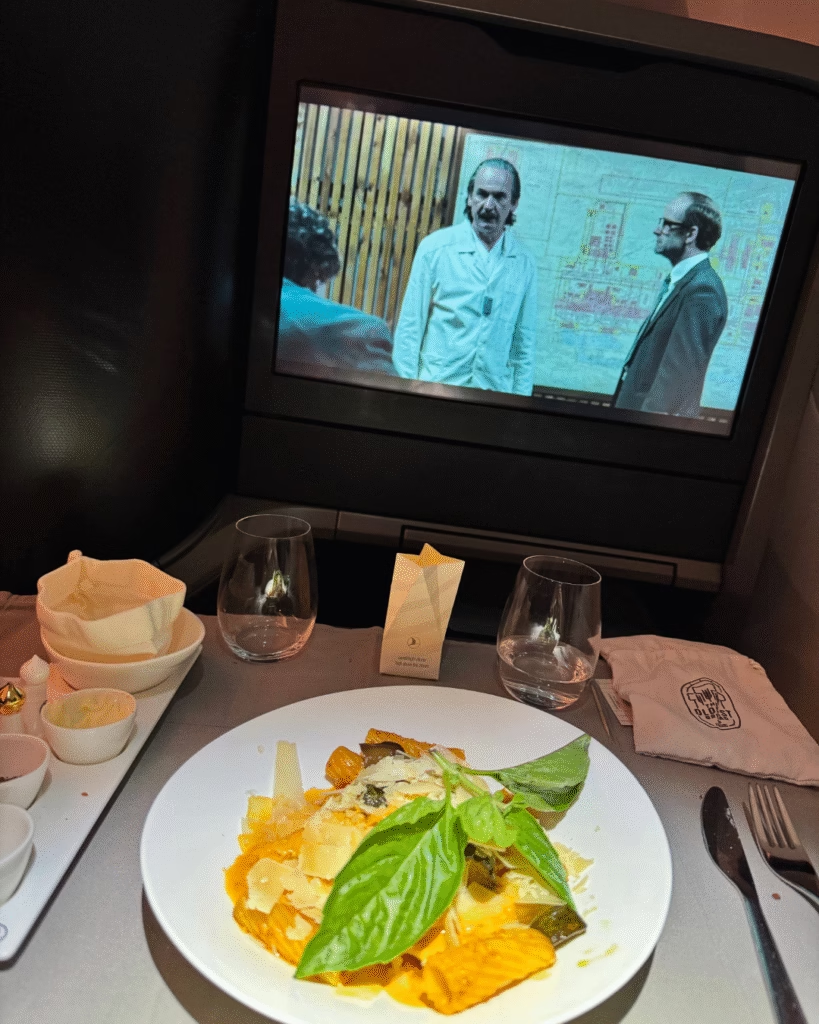
The service throughout the flight was stellar, attentive but not overbearing, and it was consistent on both legs of the trip. After dinner, I reclined my seat into a fully flat bed and managed to sleep for 7.5 hours, which is a first for me on any flight. It did take me a while to get fully comfortable—and I can imagine it might be trickier for someone tall or broad, but I was out cold once I found my sweet spot. I woke up just an hour before landing in Istanbul, feeling surprisingly refreshed. The crew came by with some Turkish Delight before we disembarked—such a sweet (literally) way to end the flight.
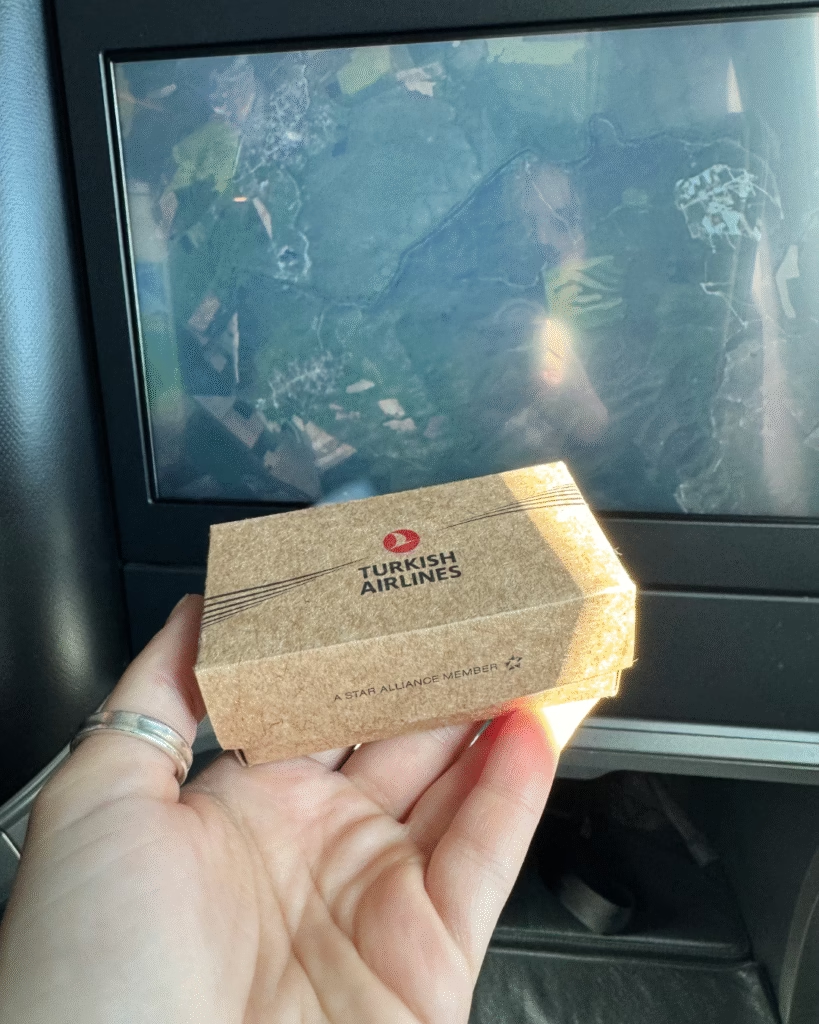
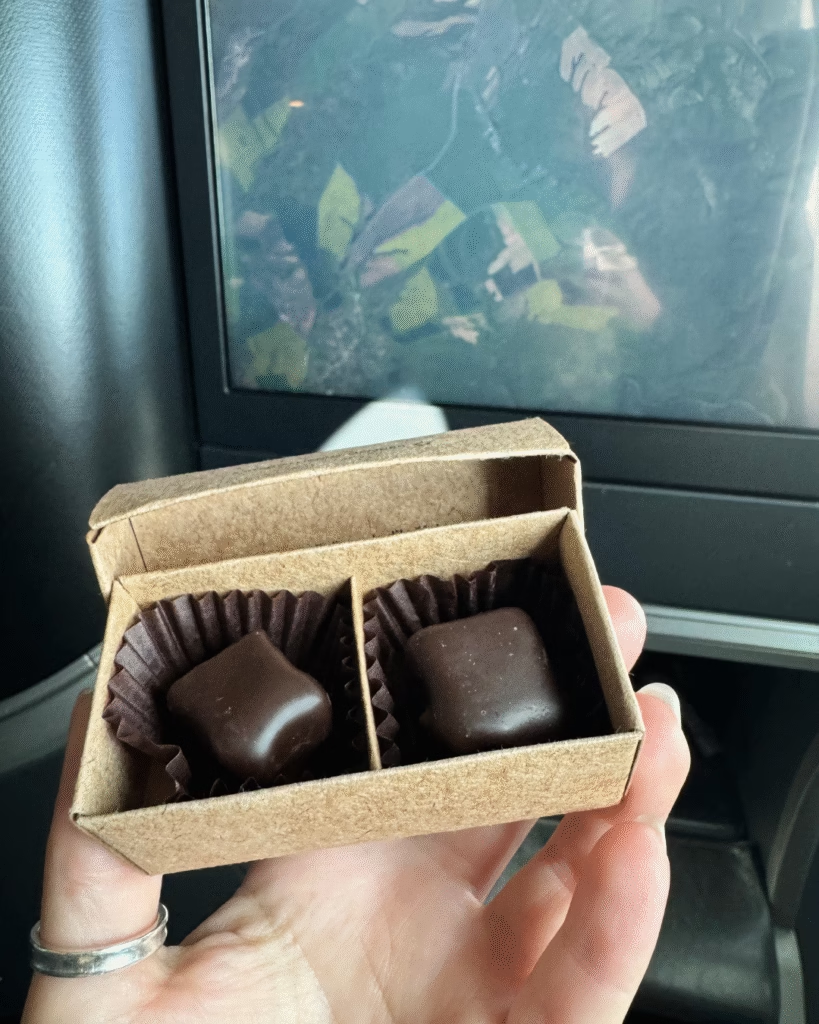
On the shorter leg from Istanbul to Tbilisi, I was also booked in business class. This plane was noticeably older for this flight, the kind with screens that drop down from overhead like an old-school minivan and my seat’s power outlet didn’t work, which meant I couldn’t charge my phone. The entertainment system had actual channels, which really brought the nostalgia. Still, the Turkish Airline crew made me feel like royalty so it was worth it!
The return leg from Tbilisi to Istanbul, however, was on a newer, upgraded aircraft and the difference was immediately noticeable. The cabin felt fresher, the in-seat screens were current, and everything from the lighting to the storage layout was way more refined. It was a quick flight, but the upgraded equipment made it even more pleasant.
Despite that, both shorter business class flights were extremely spacious; in fact, I had to unbuckle my seatbelt just to reach under for my stored items in front of me. The seats reclined nicely and featured a leg rest and footrest combo that let me prop my legs up comfortably. The food was more basic compared to the long-haul leg, and while it wasn’t surprisingly amazing, I did enjoy the cheese selection and the chocolate fig mousse. The white wine was lovely—crisp, tasty, and a generous pour.
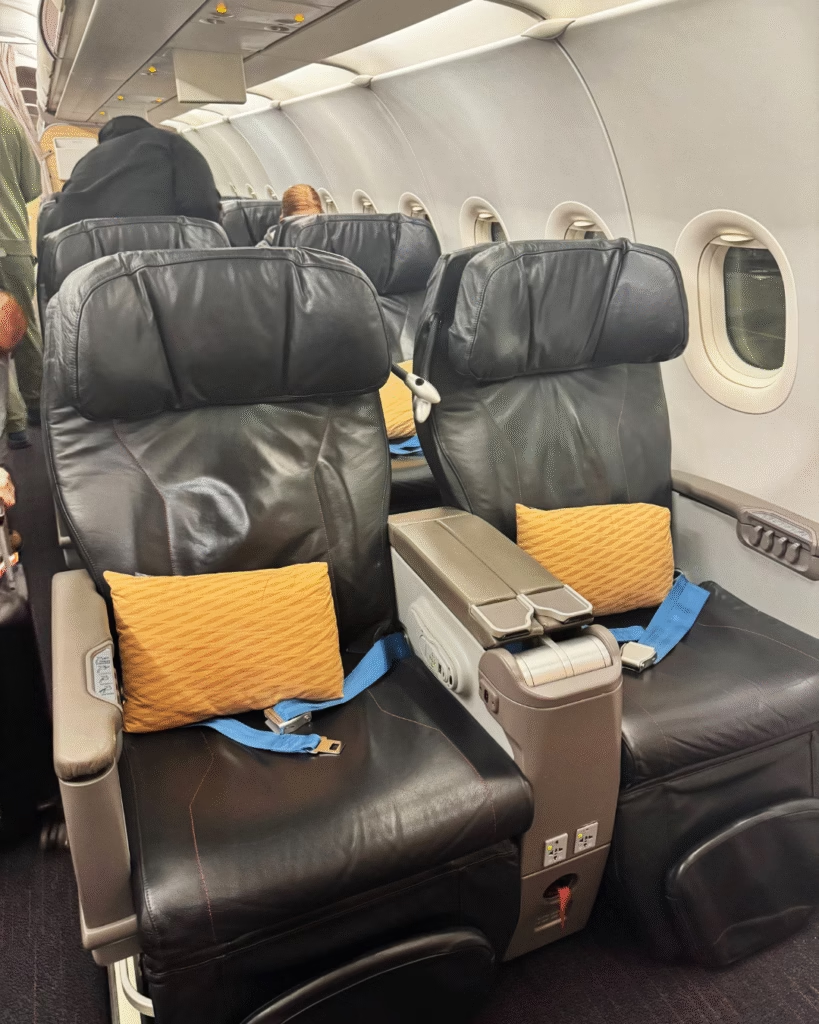
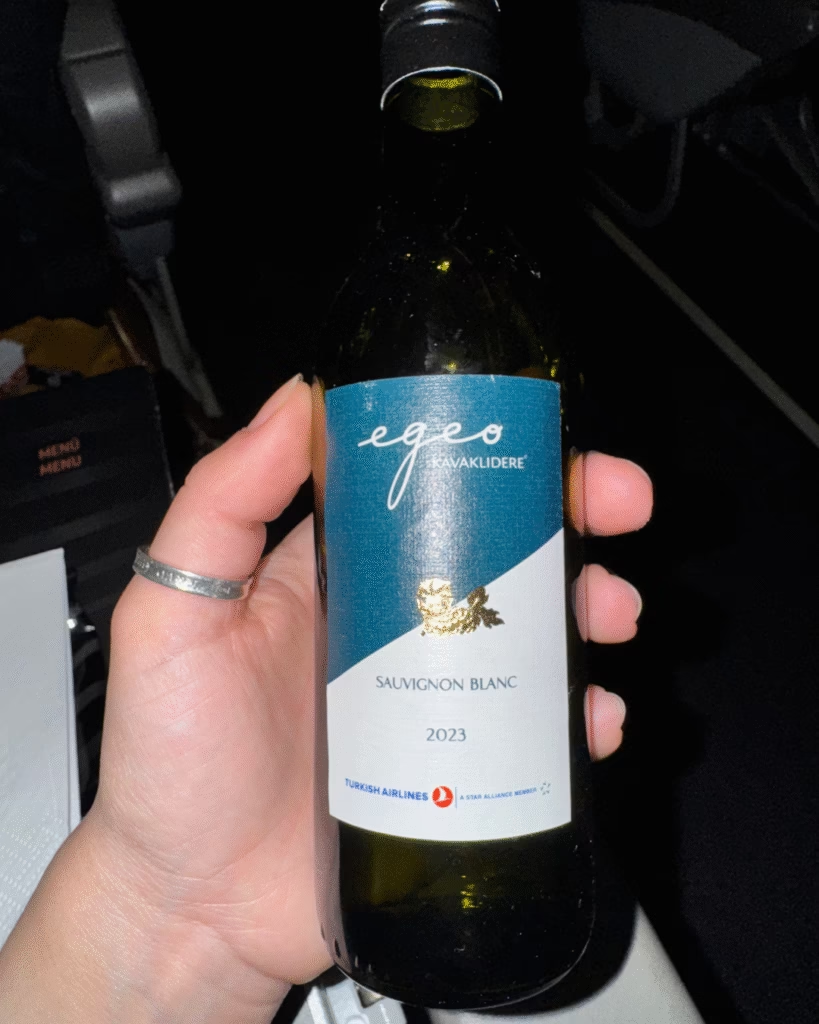
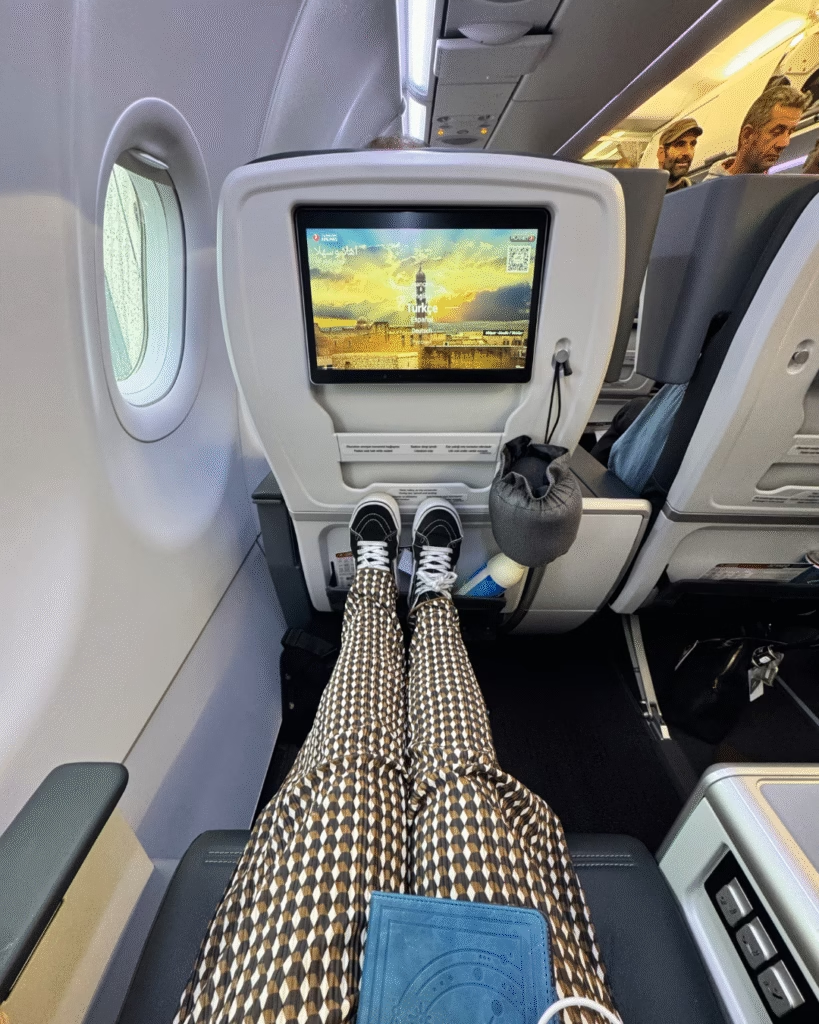
Right: My business class seat from Tbilisi to Istanbul (featuring my legs as units of measurement).
My return trip to the U.S. mirrored the outbound experience: smooth, restful, and impressively comfortable. Turkish Airlines really nails the balance between luxury and efficiency. Their business class might’ve just ruined regular flying for me—but I’m not mad about it.
Istanbul Airport: A Layover Like No Other
Istanbul Airport might just be the biggest airport I’ve ever set foot in. Walking from one end to the other takes a solid 15 minutes, but thankfully, every gate is clearly marked with big, easy-to-read signs (in English), so navigating was surprisingly smooth.
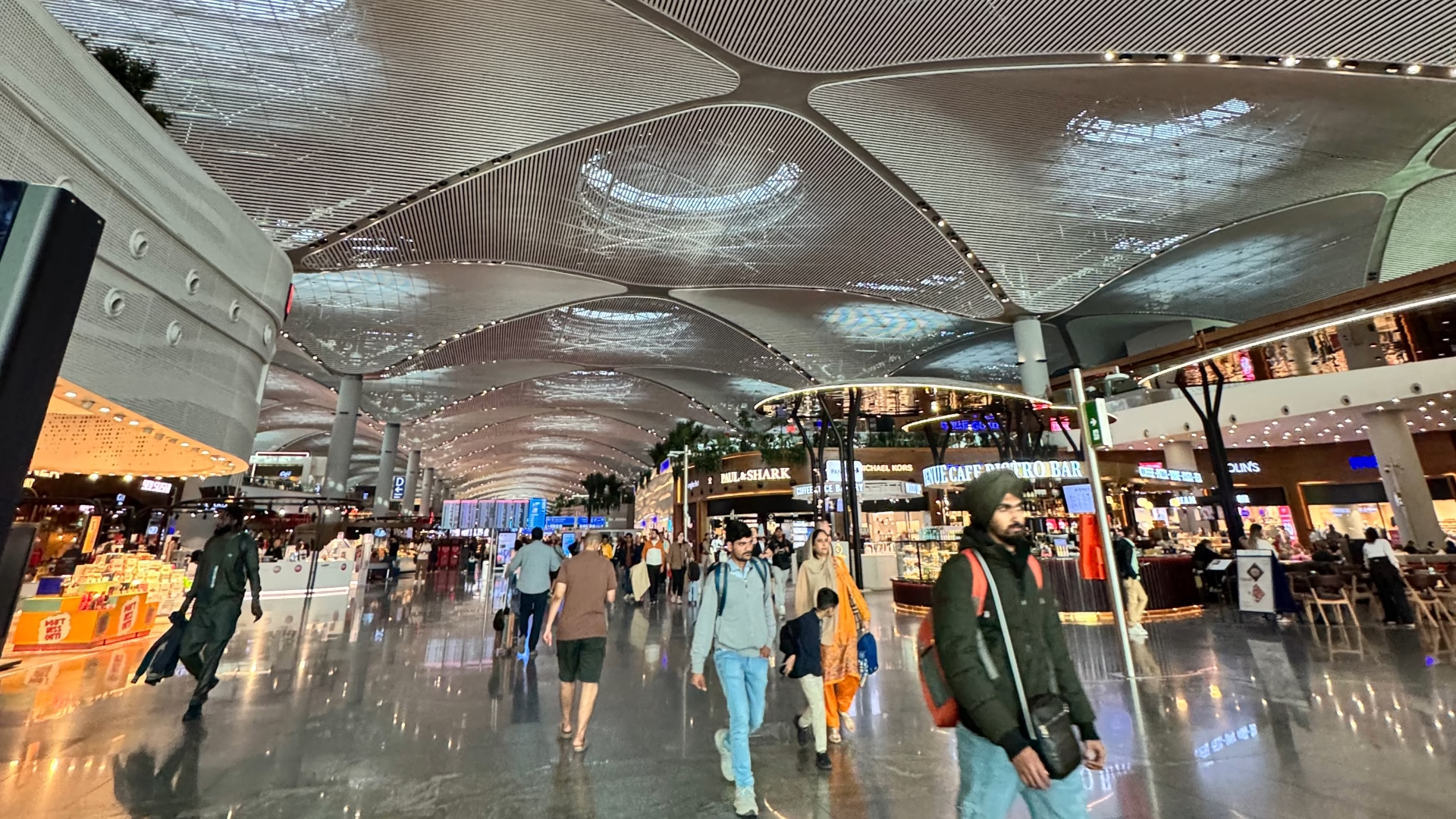
Interestingly, I didn’t have to go through customs upon arriving in Istanbul from the U.S.—and since I wasn’t leaving the airport, no visa was required either. However, when I returned to Istanbul from Georgia, I did go through customs at that point. So just something to keep in mind depending on where you’re coming from.
This airport is basically its own city. You can grab a snack at a convenience store, splurge at luxury shops like Dior and Louis Vuitton, or even squeeze in a little self-care—yes, there’s a spa, a dentist, a barbershop, and even an airport museum. It’s wild! You could easily spend a few hours here and still not see it all.
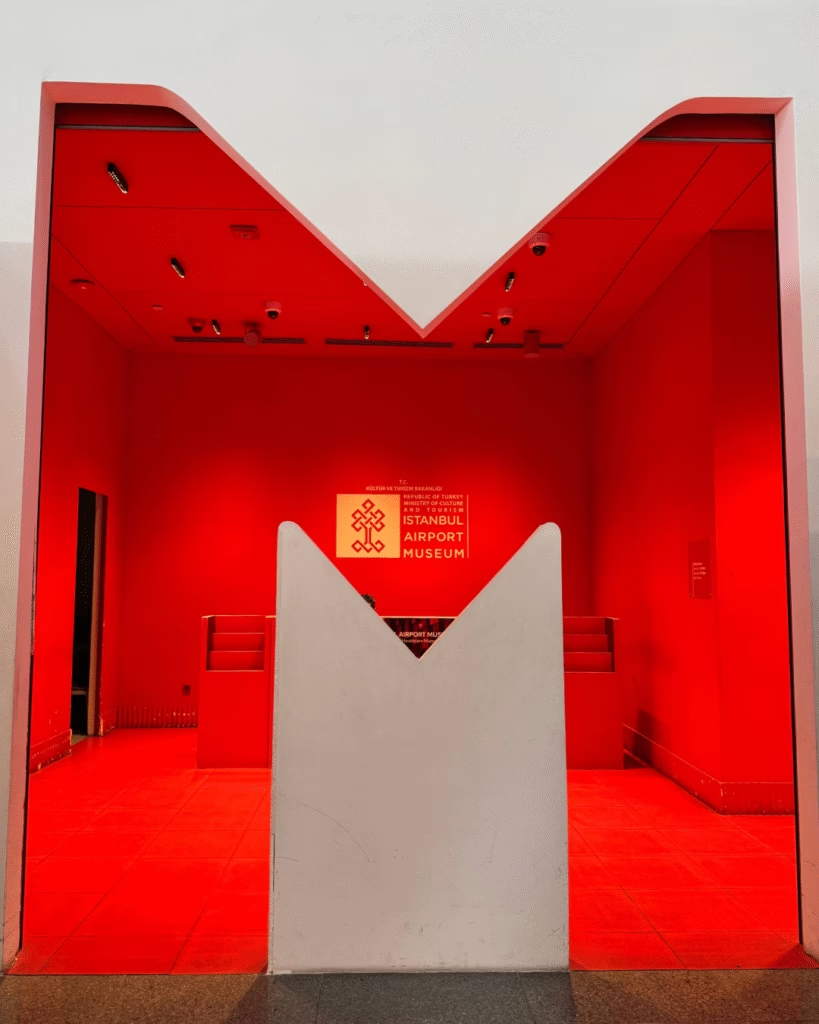
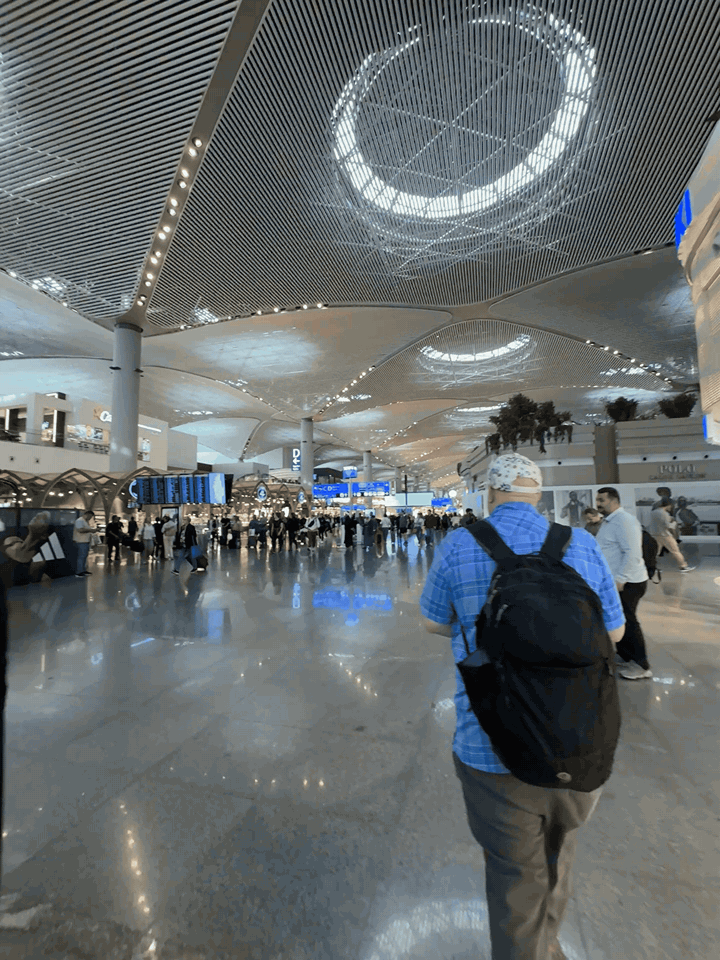
At one point, Jared (another member of our educational group who flew with me from Seattle) and I were trying to track down Vicky, another agent in our group. That’s when we learned Istanbul Airport has three Turkish Airlines lounges: Business Class, Miles&Smiles, and Domestic. If you’re flying internationally, the Domestic lounge isn’t an option—but the Business Class lounge? That’s where it gets impressive.
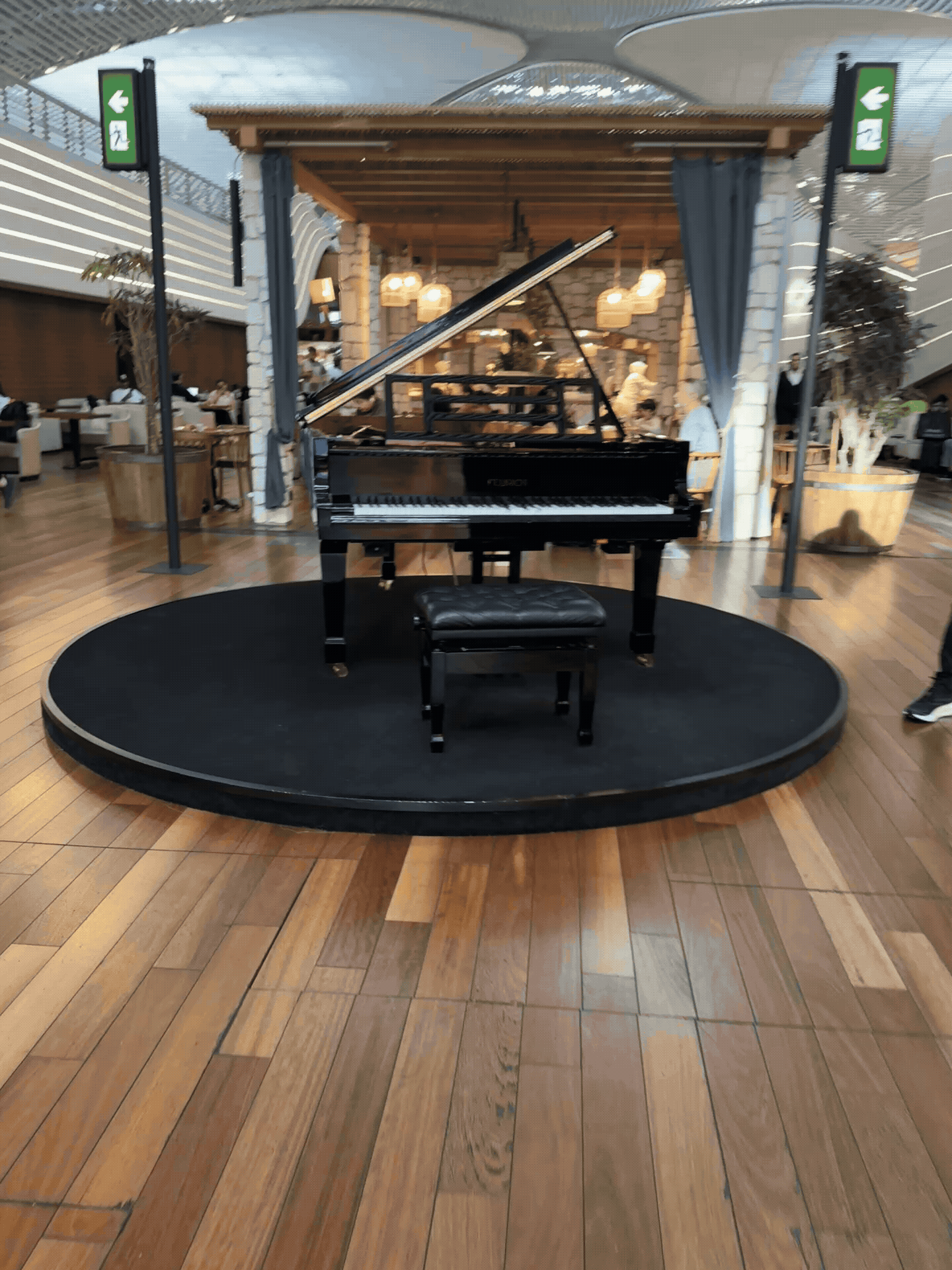
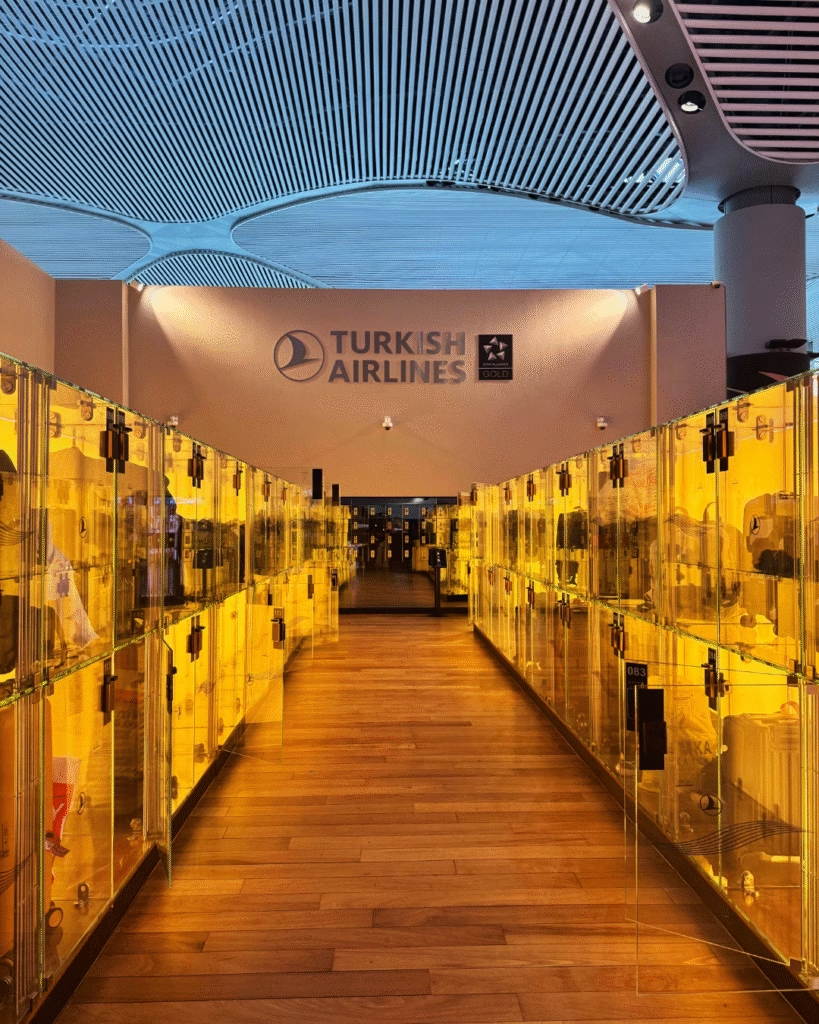
Right: You can find your own personal locker inside the lounge to keep your stuff safe as you wander around the airport.
As soon as you step in, you’re greeted by a grand piano playing itself. It’s kind of theatrical, but it works—it really sets the tone for how over-the-top luxurious Turkish Airlines wants the experience to feel. As you wander through the lounge, you’ll see chefs preparing gourmet Turkish and international dishes right in front of you. There’s also a sleek coffee bar where you can get a made-to-order cup. I went for a classic Turkish coffee with a little sugar—perfectly strong and sweet.
Since Turkey is a Muslim country, the alcohol options are a bit more subtle, but they’re there. I spotted mini fridges built into the wall near the chefs with beer, and there was a little wine cart tucked near the espresso bar for those wanting something to sip.
The lounge was bustling, but not chaotic. We were still able to find seats without much trouble. The only real challenge? Outlets. If you find one (most are on the floor), it’s likely going to be a European B-type plug, so don’t forget to pack a converter! Oh, and if you’re looking to kill time in style, there’s a virtual golf simulator and a VR flight experience that lets you soar over a virtual Istanbul. Yep, Turkish Airlines really said: why not make the lounge part of the adventure? Also, do NOT forget to buy your Dubai chocolates here at the airport. Trust me.
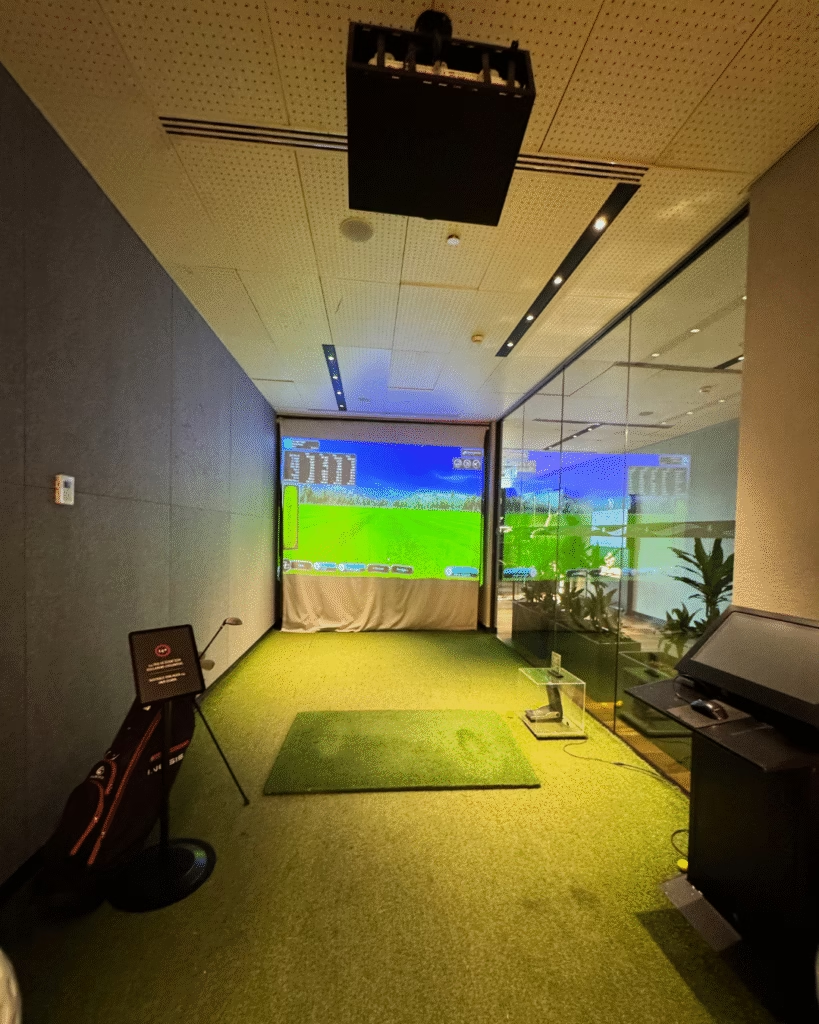
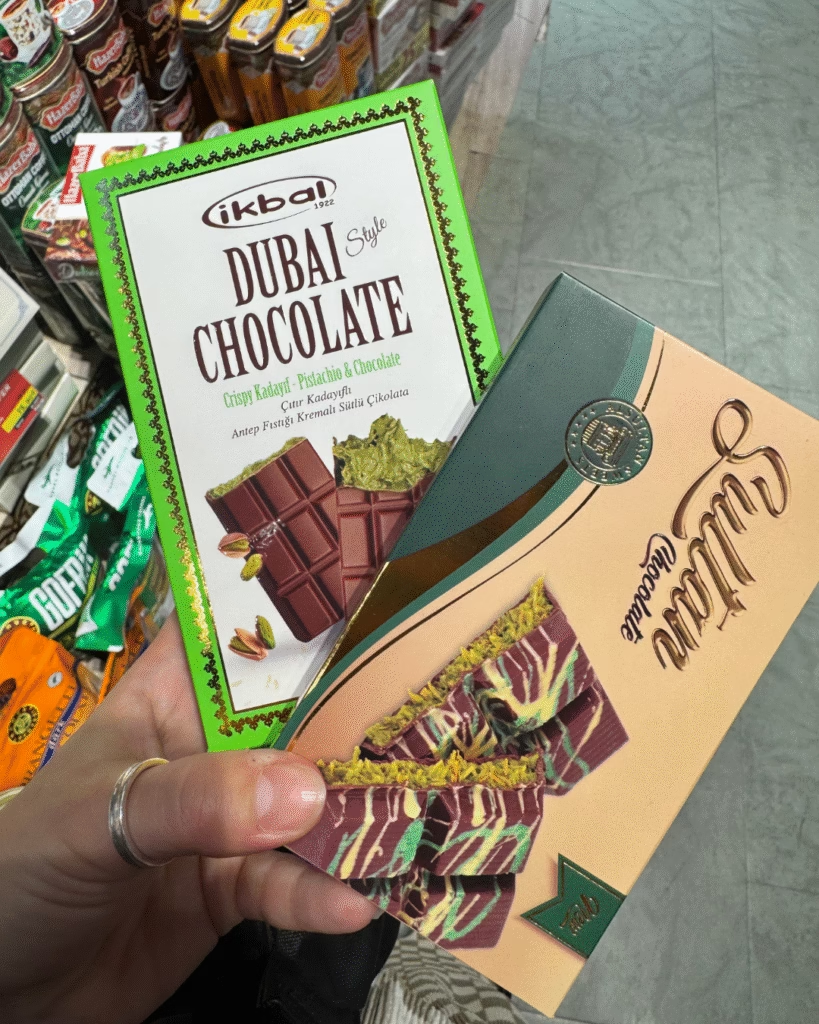
Georgia Welcomes You Into the Caucasus Mountains and Wine Regions
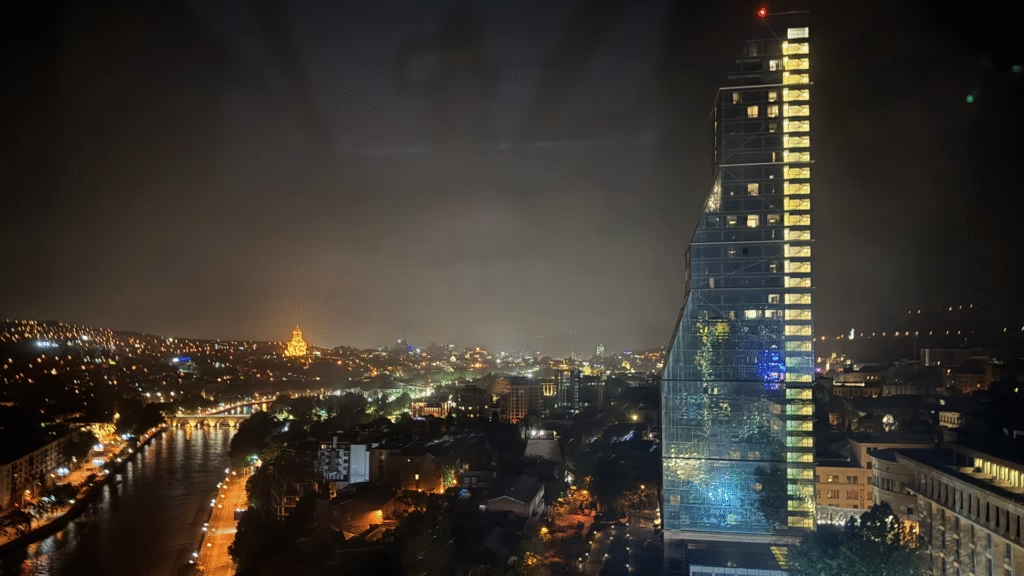
I landed in Tbilisi, the vibrant capital of Georgia, around 1:30 a.m. Miraculously, I managed to sleep most of the flight, so I wasn’t totally exhausted. After checking into the Radisson Blu, I wandered straight into the hotel’s casino (because, of course, there’s casino access in the lobby). We registered quickly and were pleasantly surprised to find they offer free drinks with a full bar while you play! Yes, please! The slot machines were a bit tricky to understand and only took Georgian Lari, but I made it work.
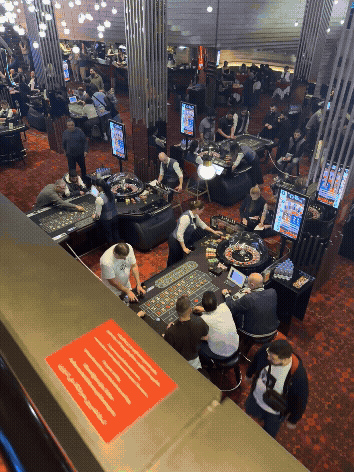
Most of our sightseeing in Georgia was centered around awe-inspiring Orthodox Christian cathedrals and monasteries. The first was Jvari Monastery, perched dramatically on a cliff about 25 minutes north of the hotel. From this sacred spot, you can see the convergence of two rivers—the muddy Mtkvari and the blue Aragvi—each with its own distinct color. It overlooks Mtskheta, the ancient capital of the Kingdom of Iberia. This place is popular and packed for a reason. Modest dress is a must (women must cover their heads), and photos of the inside are prohibited. That’s also where I met my first Georgian cat. 10/10 feline encounter!
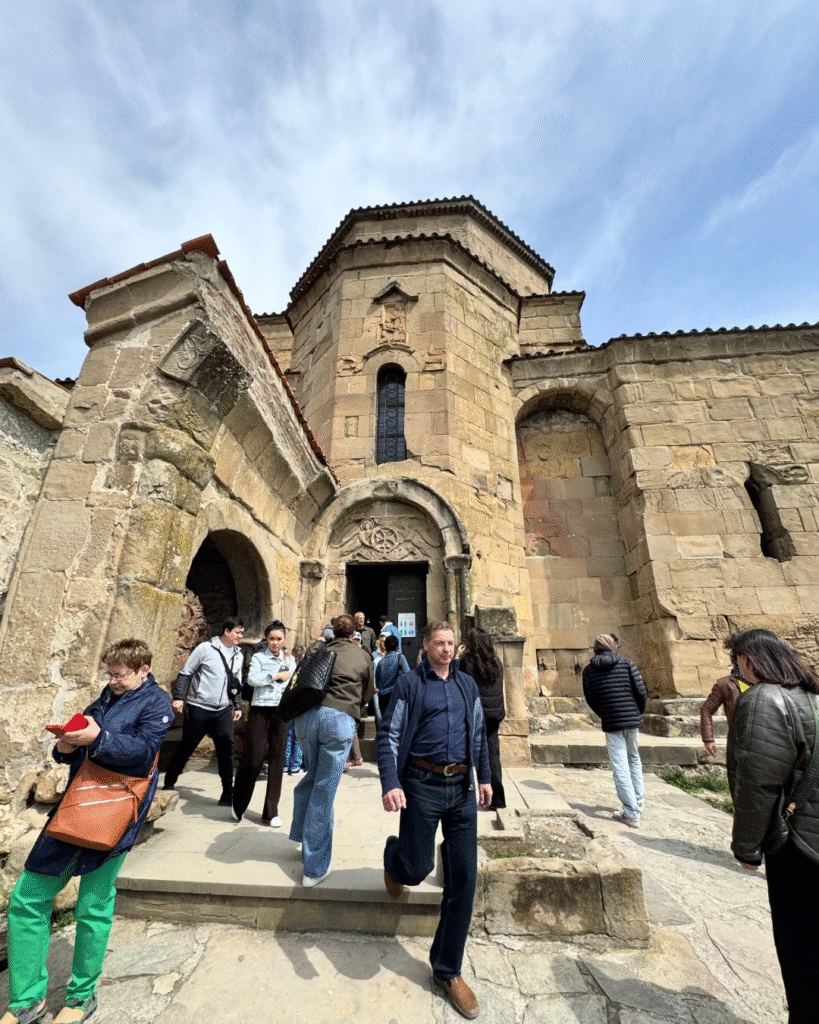
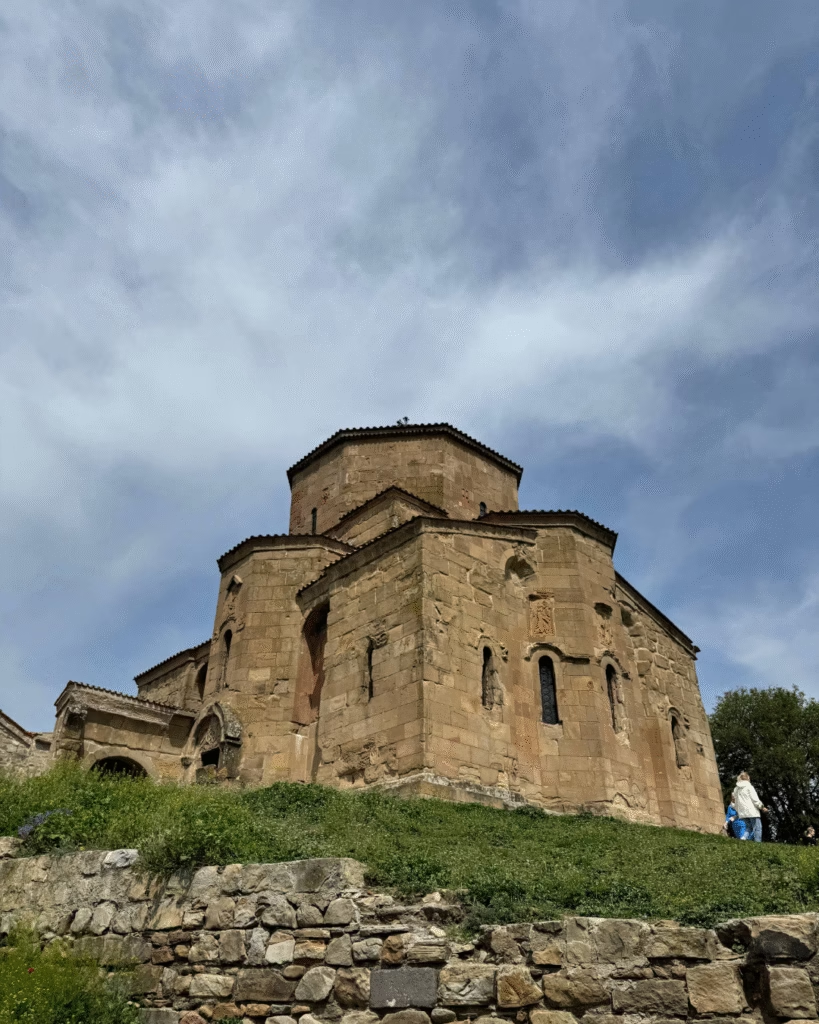

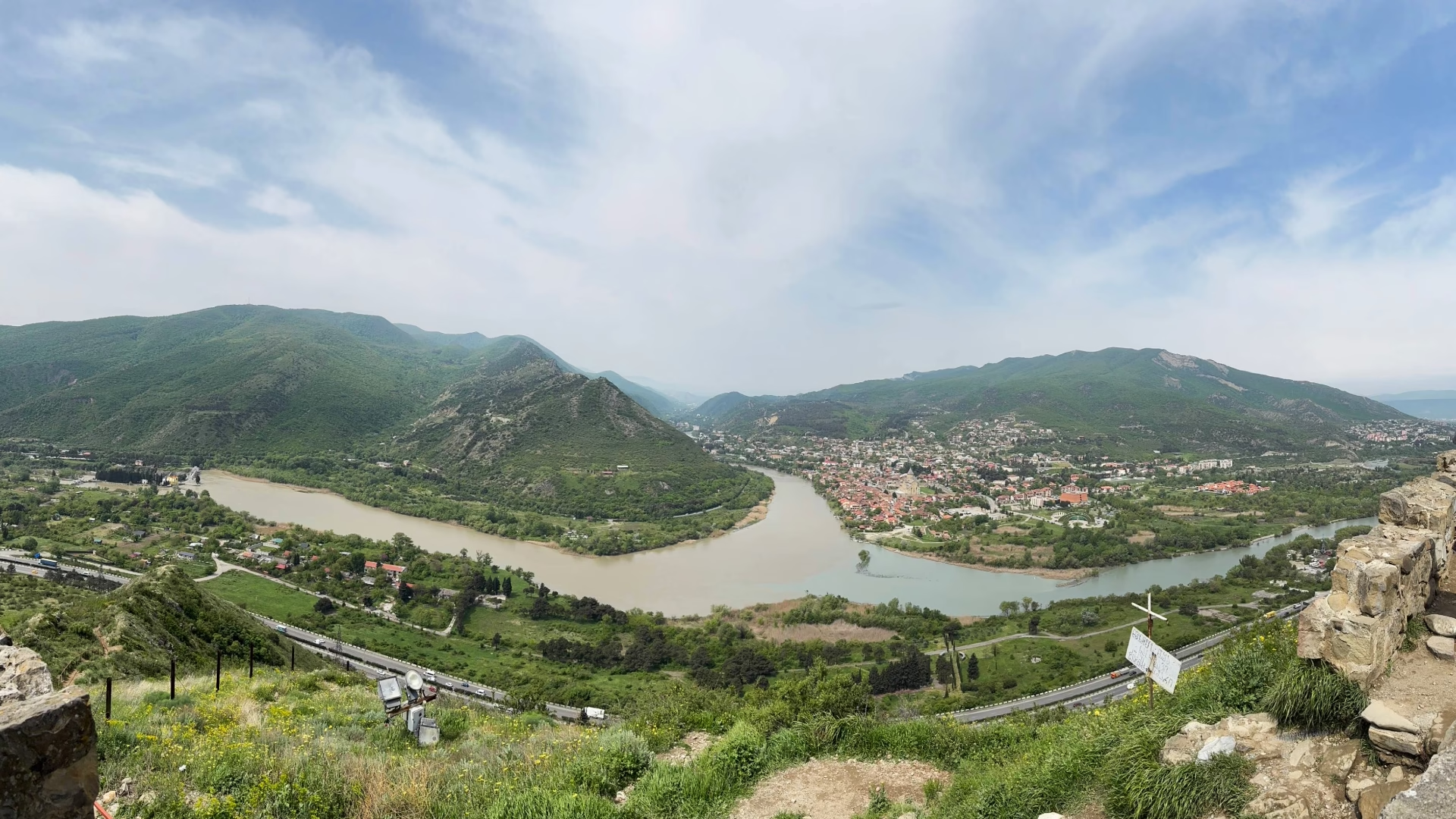
From there, we visited the stunning Svetitskhoveli Cathedral—one of the holiest sites in the region. Legend has it the church holds a cross made from the same wood as Jesus’s crucifix and is the burial site of his robe. It’s also the final resting place of Georgian royalty and houses a relic of Saint Andrew’s footbone. The cathedral is surrounded by fortified walls and gun towers, a nod to its military past. I’m not religious, but the energy here was palpable. Watching the faithful pray in such a sacred space moved me more than I expected.
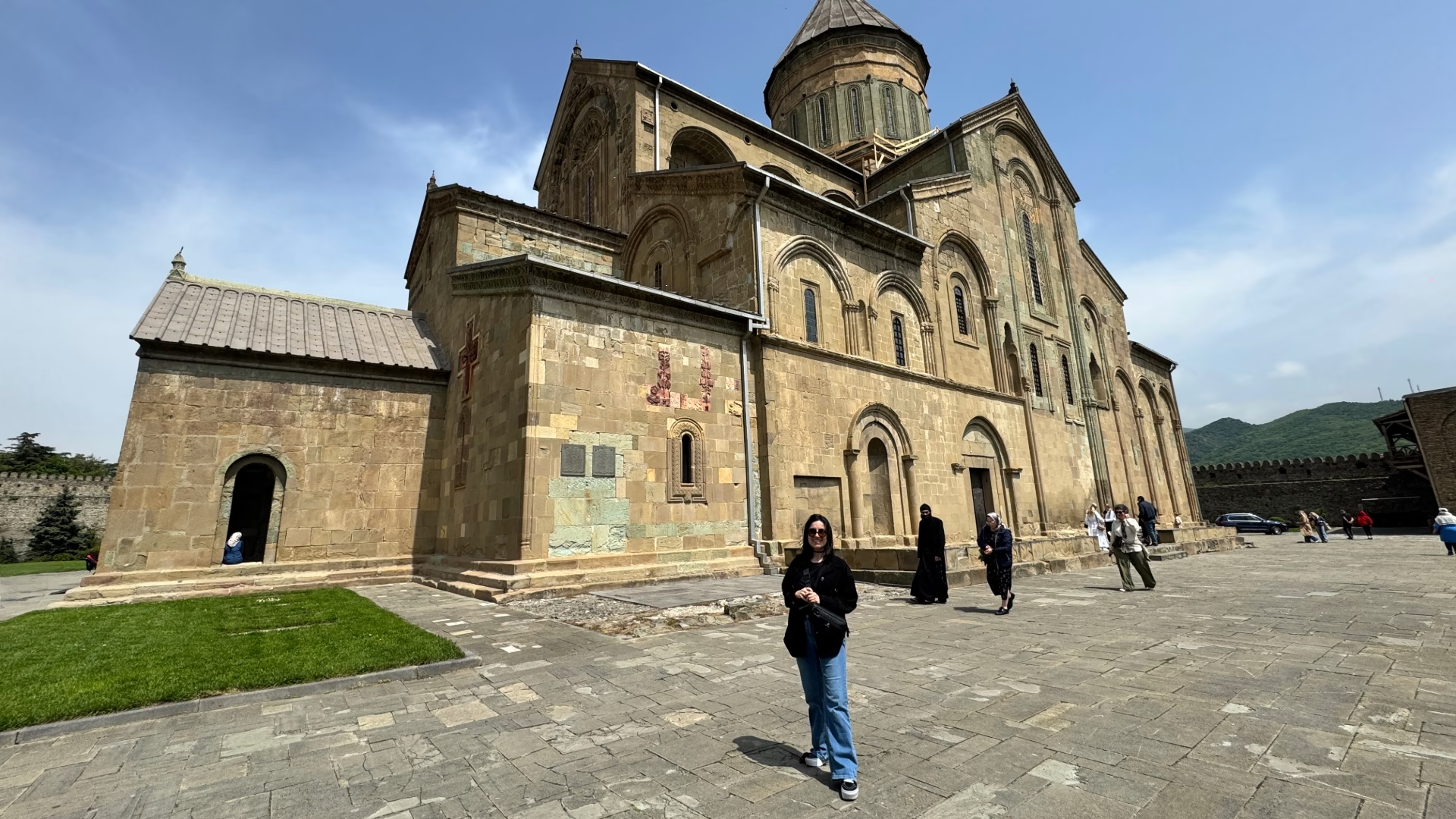
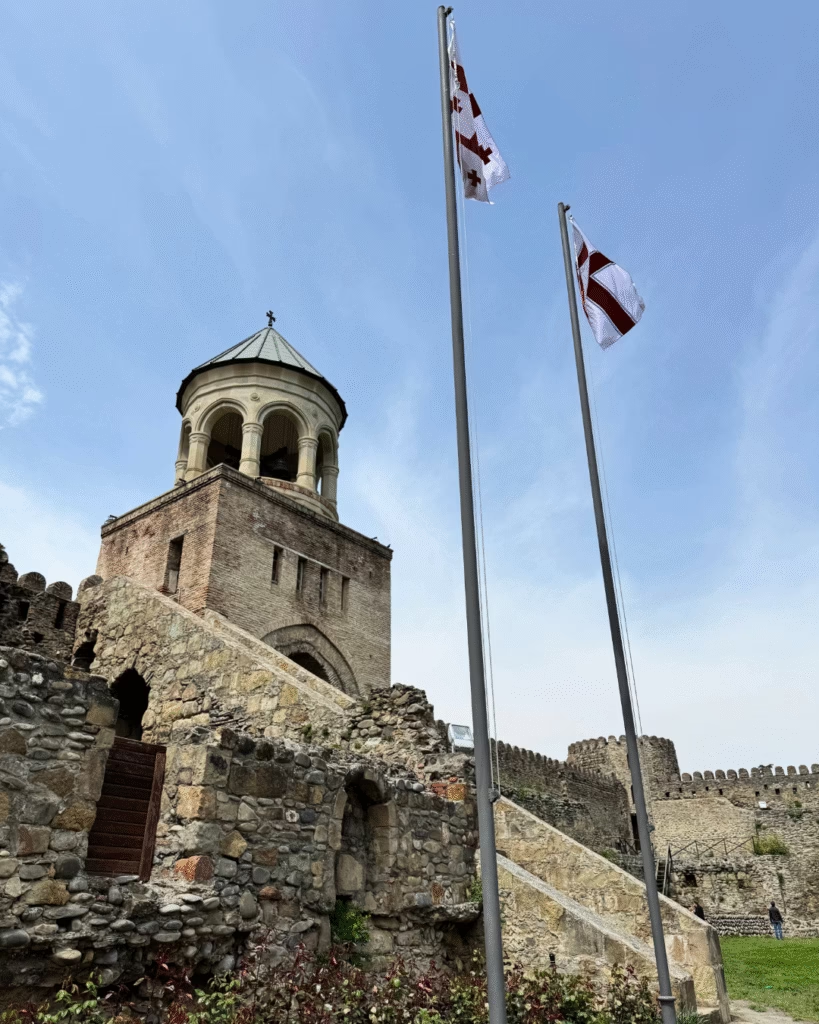
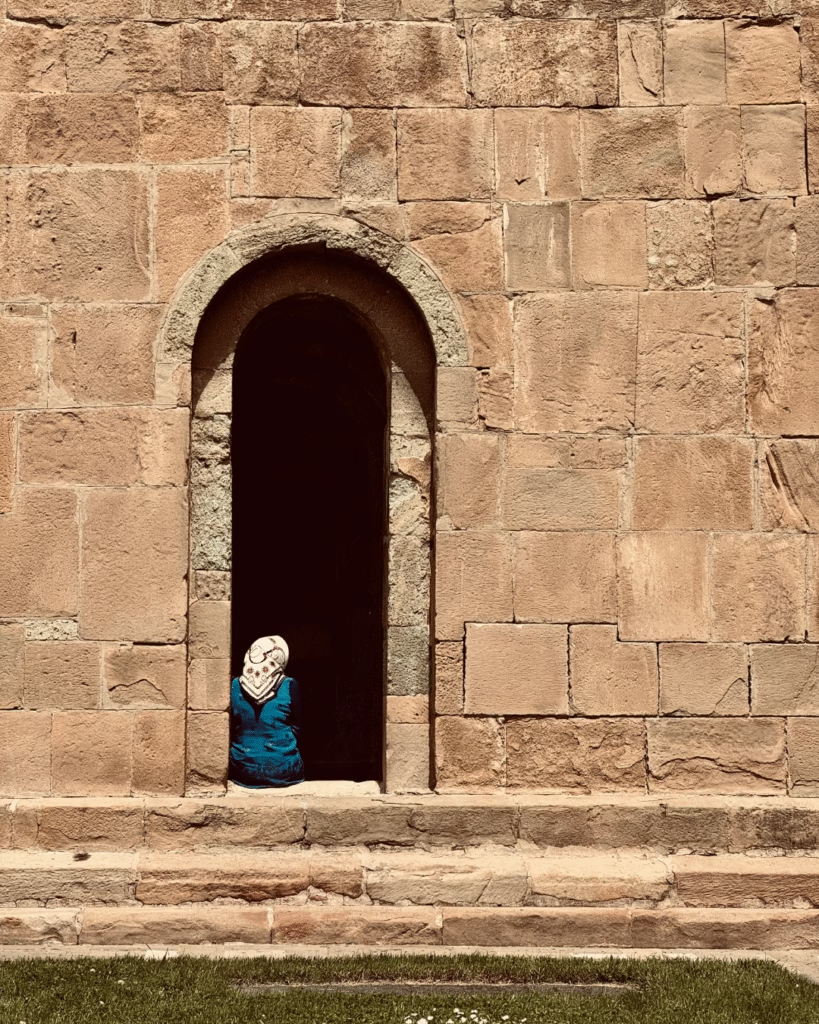
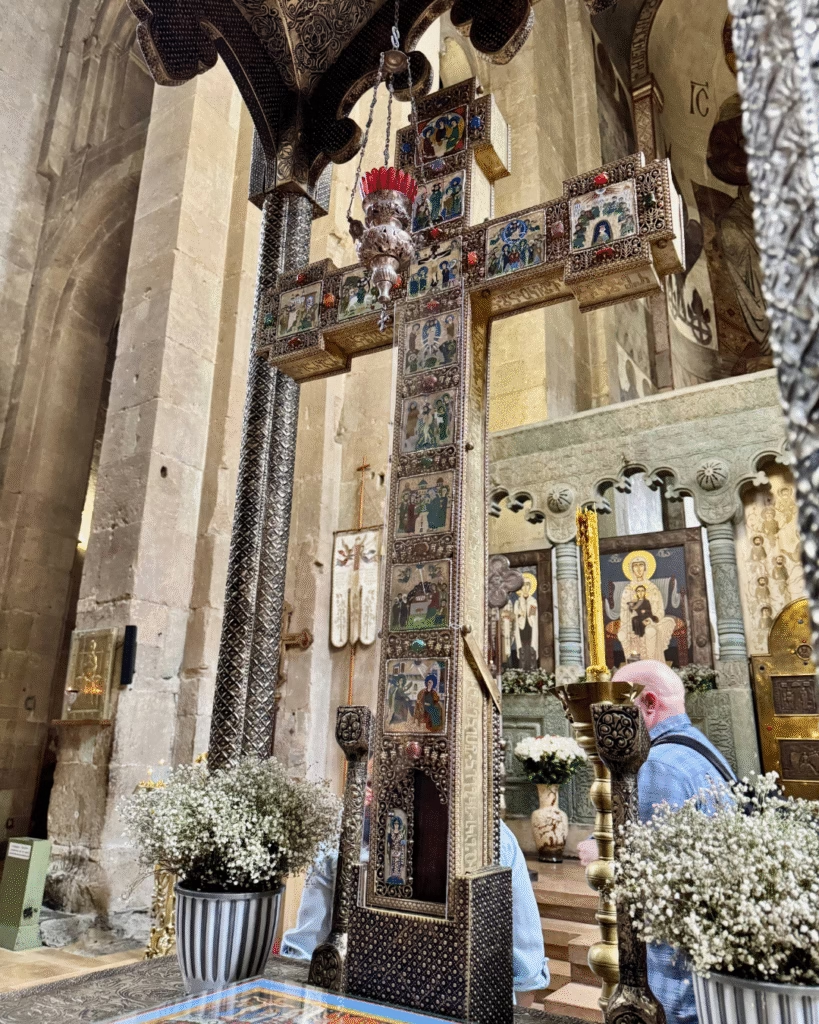
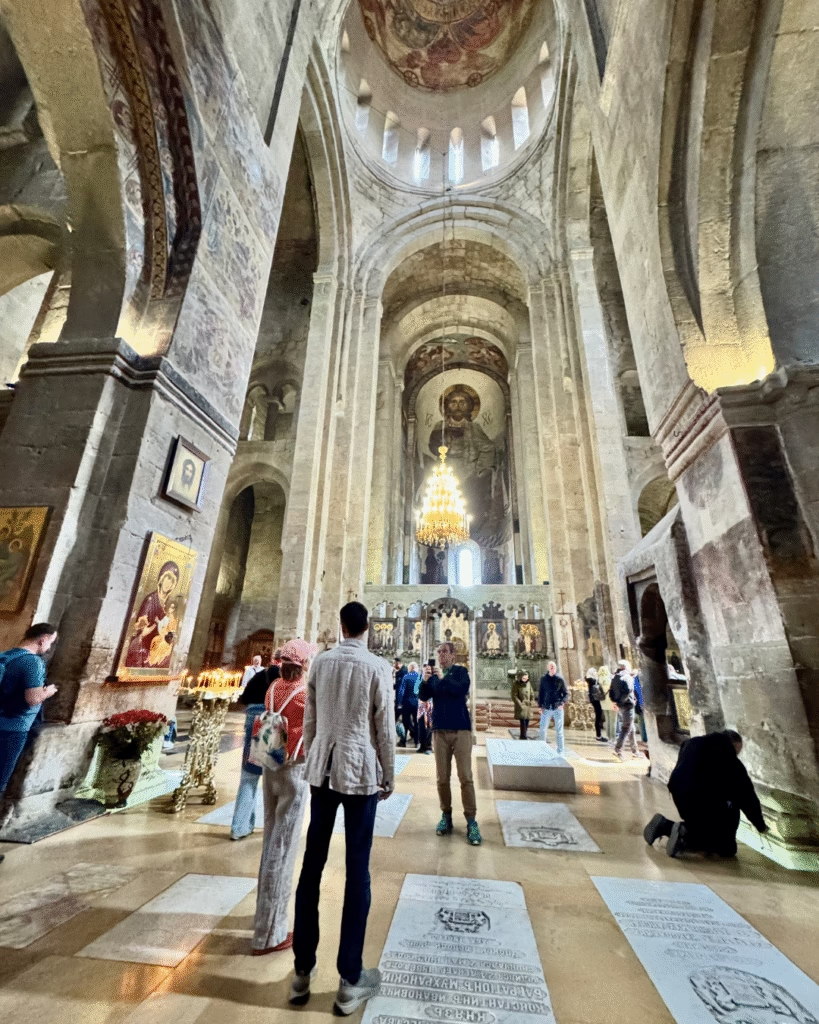
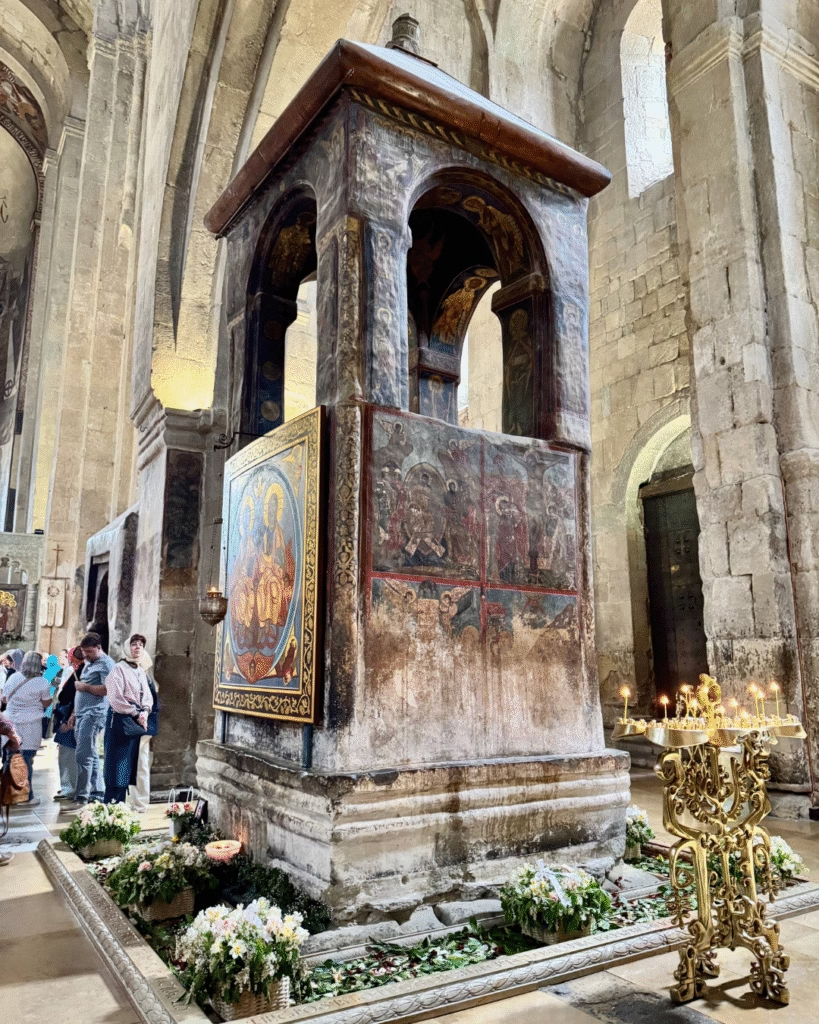
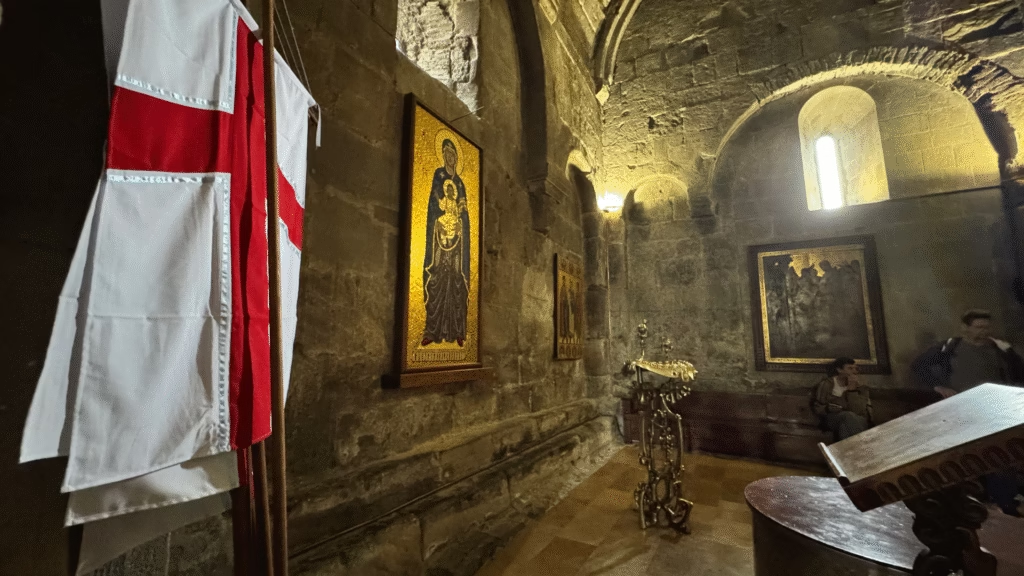
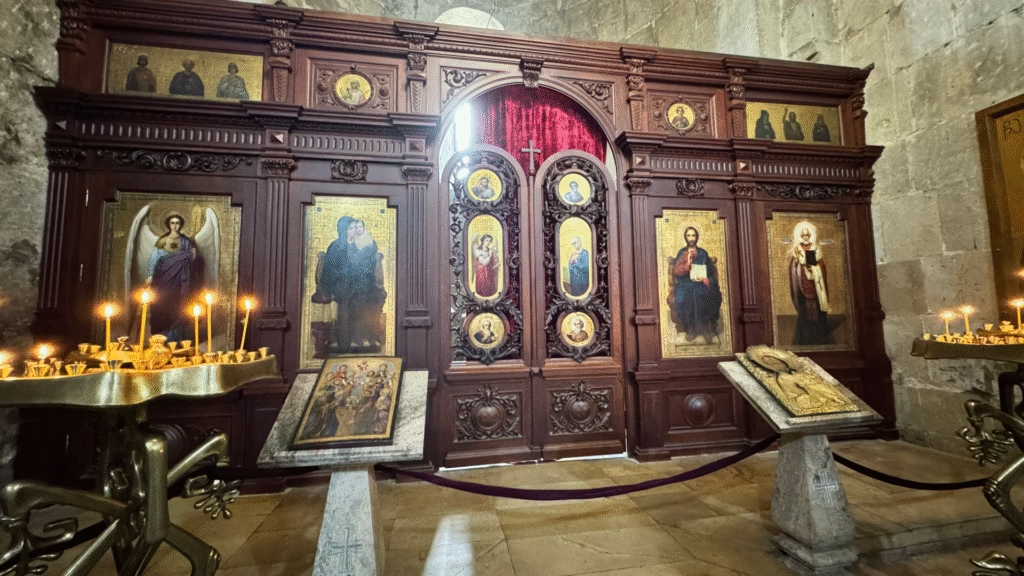
Lunch was at a charming restaurant just outside the fortress walls called Ornament Express. It had an intimate, vine-covered courtyard and a warm, family-style vibe. Homemade lemonades and fruit juices (pear and cherry!) were served before the meal—so refreshing, I’m still thinking about them. In Georgia, mealtime is long, and lunch lasted over an hour and a half. I don’t remember exactly what I ate, but I know it was delicious!
Then we hit the road for Stepantsminda (formerly Kazbegi), located just 20 minutes from the Russian border. The drive was stunning but rough—lots of construction and narrow tunnels. The town itself felt bit weathered and unfinished, with abandoned buildings and scattered construction materials. Still, being cradled in the Caucasus Mountains made the whole scene majestic. Sitting on the balcony at our hotel, Rooms Kazbegi, and watching the sunset behind snow-capped peaks was absolutely magical.

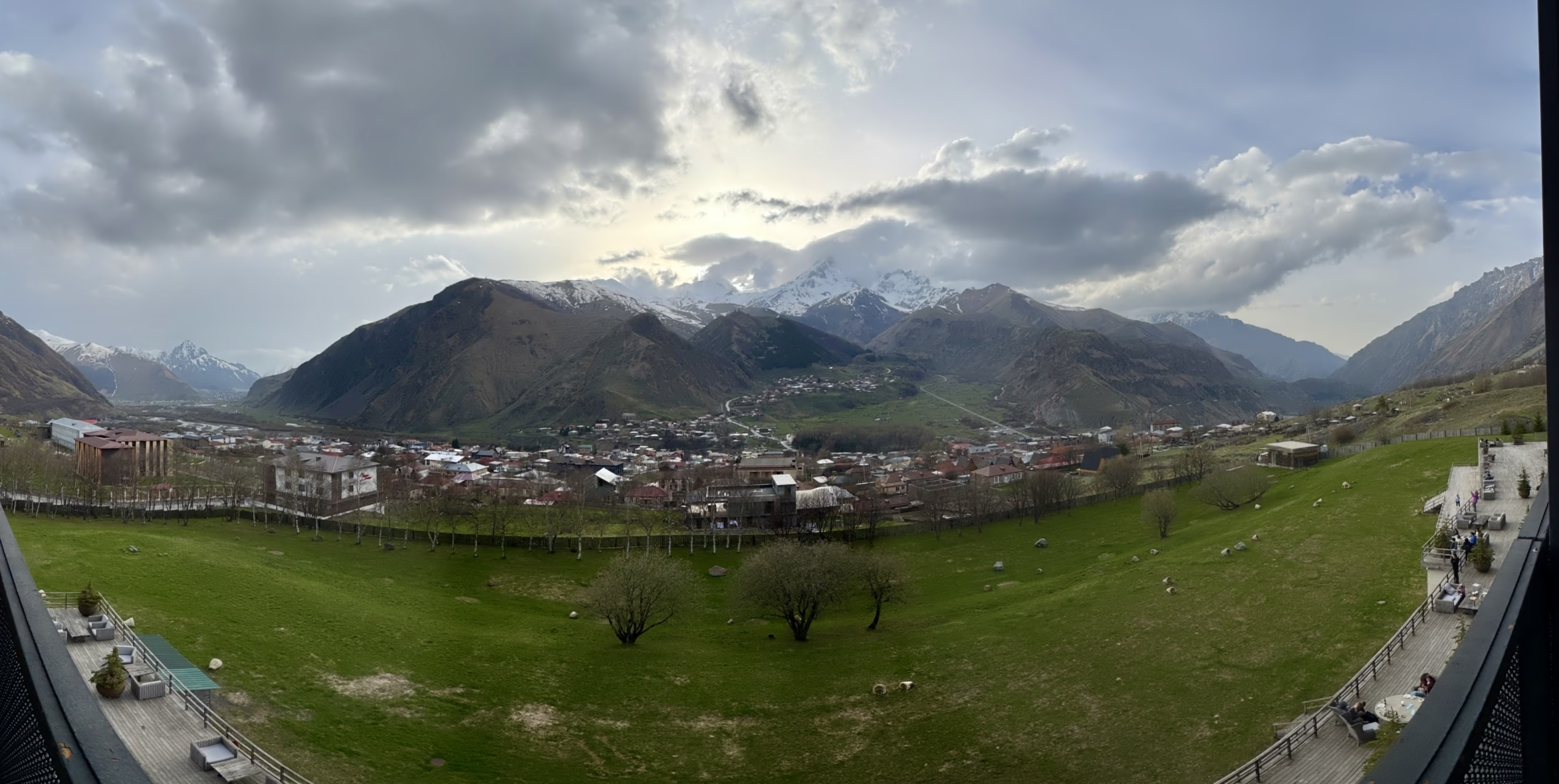
Dinner that night was another Georgian feast. Think khachapuri (cheese bread), eggplant with walnut paste, chunky tomato salads, and my pick: ajapsandali, a savory, stewed eggplant dish bursting with garlic, herbs, and spice. I devoured it before I could even take a photo (oops).
The next morning, I hit the hotel breakfast buffet (a jet-lagged scramble for waffles, let’s be real) and then headed to the Dariali Monastery Complex near the Russian border. The complex includes a church gift shop where most of the items being sold were made by the monks and nuns of the church. I was able to light a thin prayer candle for my partner and my family.
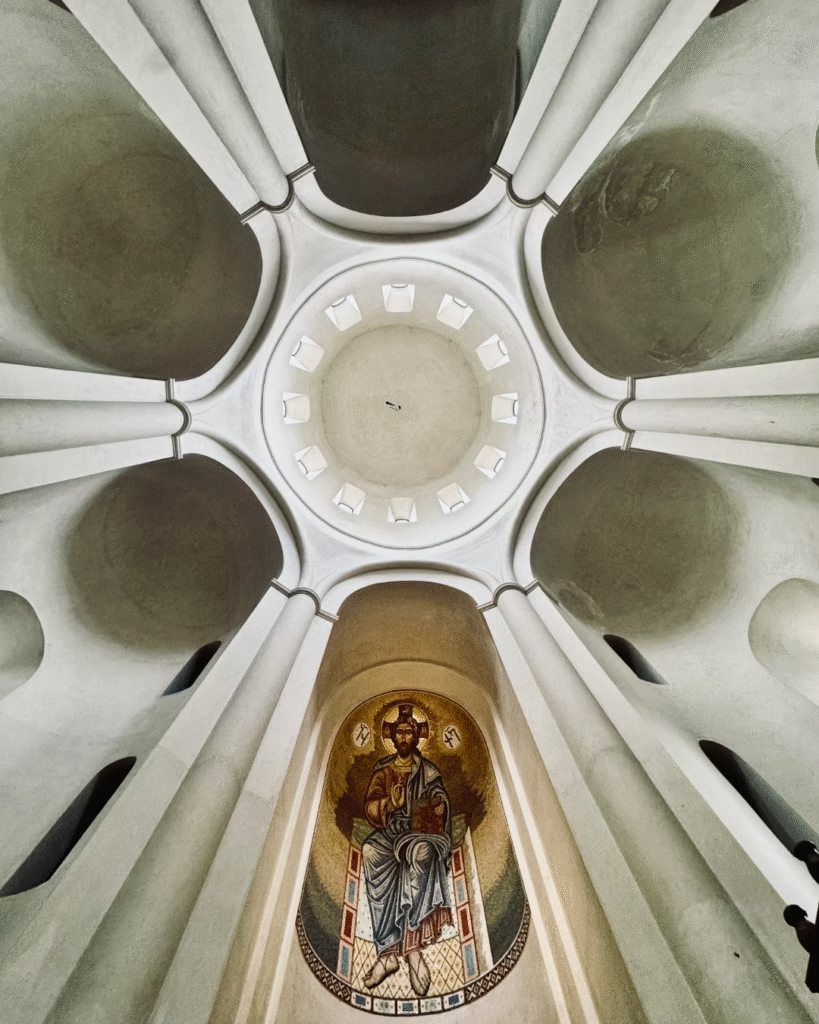
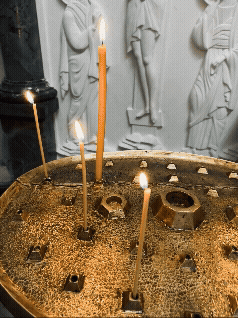
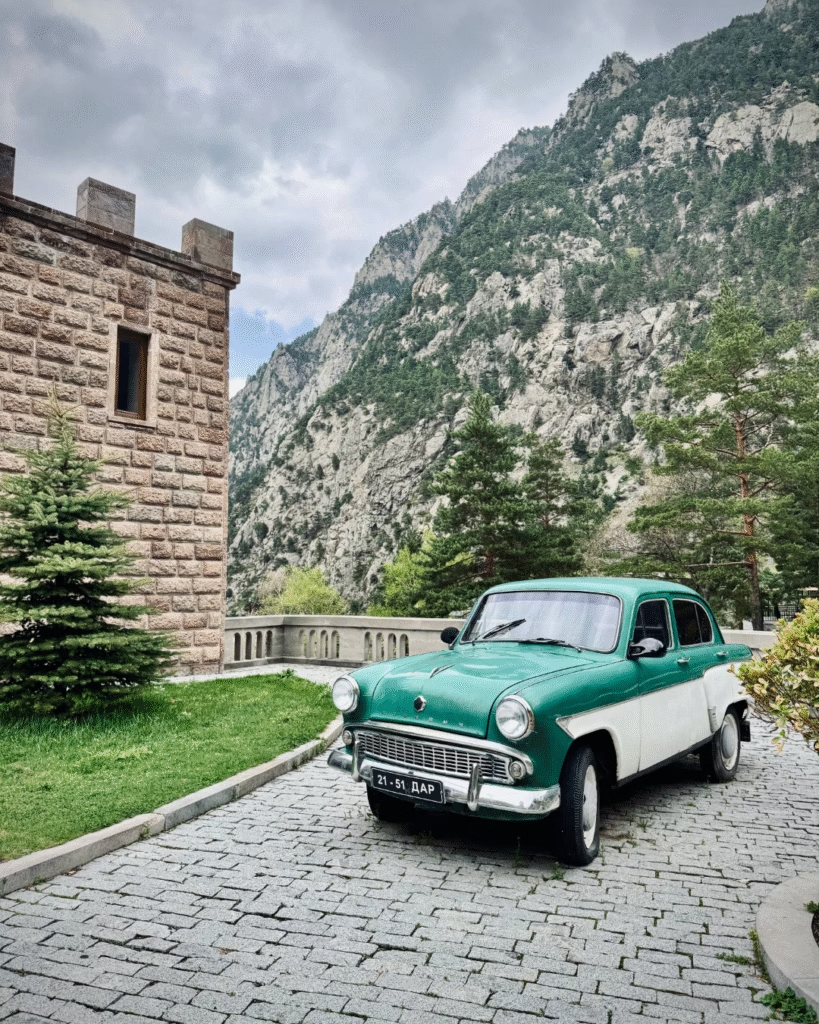
Then it was time to hop into a Mitsubishi Delica—our new 4×4 ride up to Gergeti Trinity Church, nestled dramatically under Mount Kazbek at over 7,000 feet elevation. I could see this church from my hotel room but had no idea we’d actually go there. Getting to it requires a brief but steep uphill walk, so travelers with mobility issues may want to plan accordingly. Despite some ongoing restoration work, the 360° mountain views up there are breathtaking.
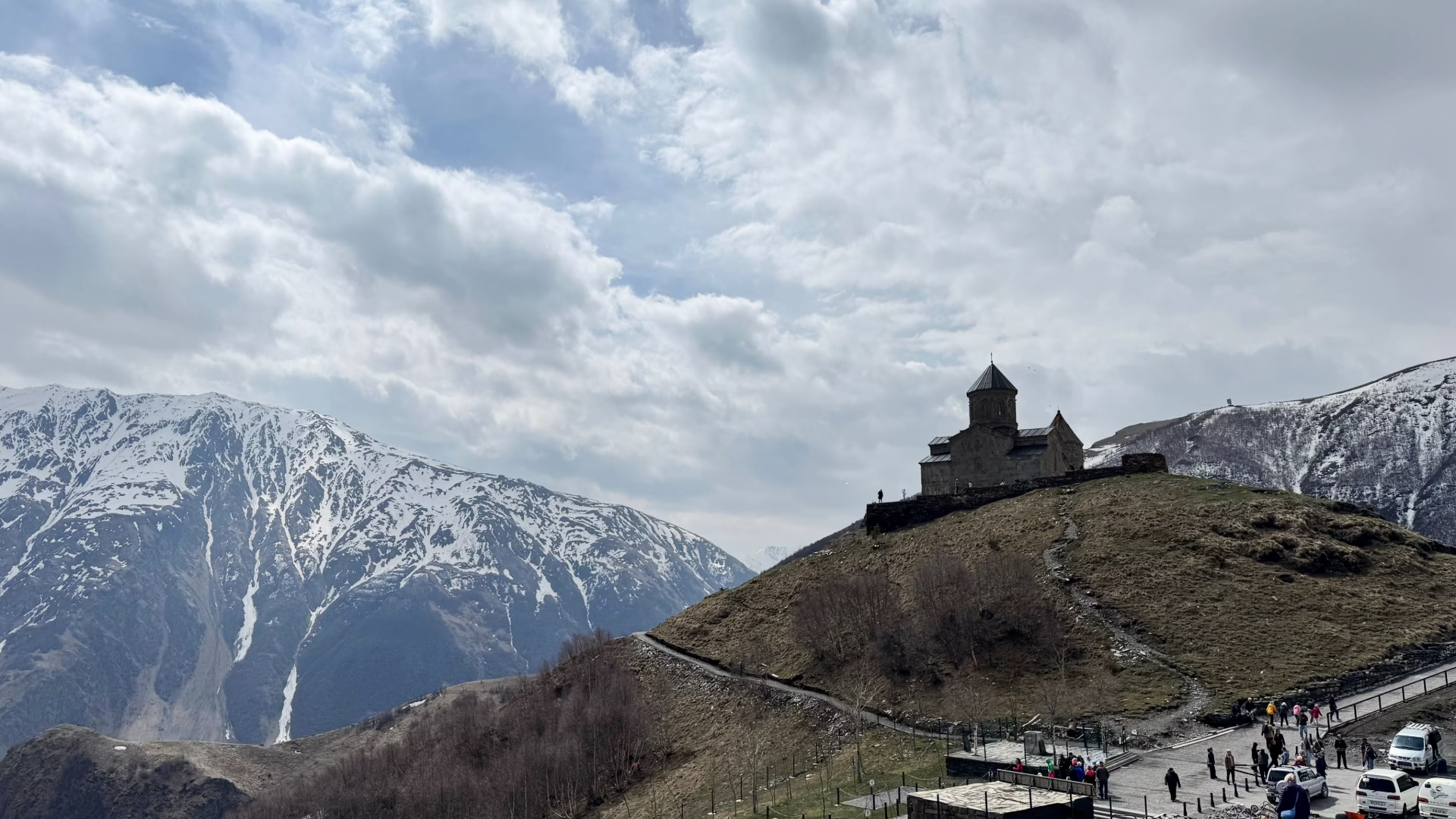
On the way to our next destination, we made a quick stop in Sno (yes, that’s the real name) to see the massive rock face sculptures by Merab Phiranishvili, a local artist who literally carves these by hand. We even got to meet him! Then came a long 4-hour drive to the Radisson Tsinandali Estate in the wine-rich Kakheti region.
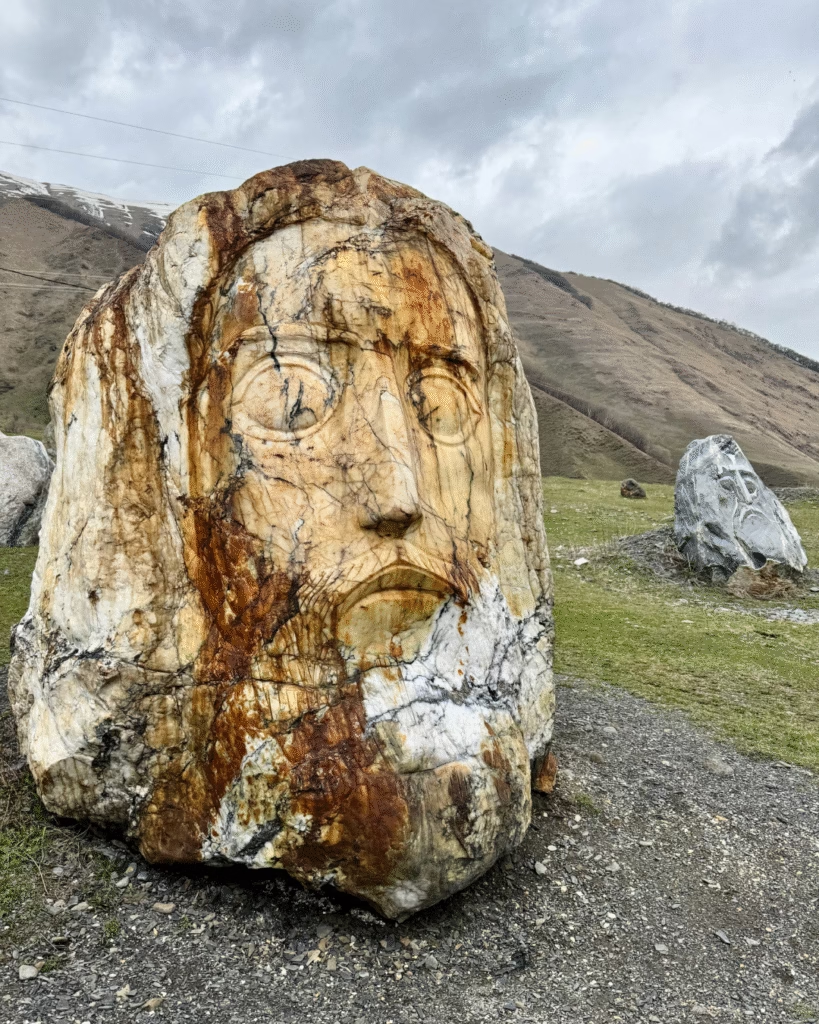
About halfway through our journey, we made a quick stop at the Ananuri Fortress Complex, an epic stronghold dating back to the 16th and 17th centuries, once home to the Dukes of Aragvi, a noble Georgian dynasty. This place has seen its fair share of battles, and you can practically feel the weight of history as you walk through its partially ruined walls.
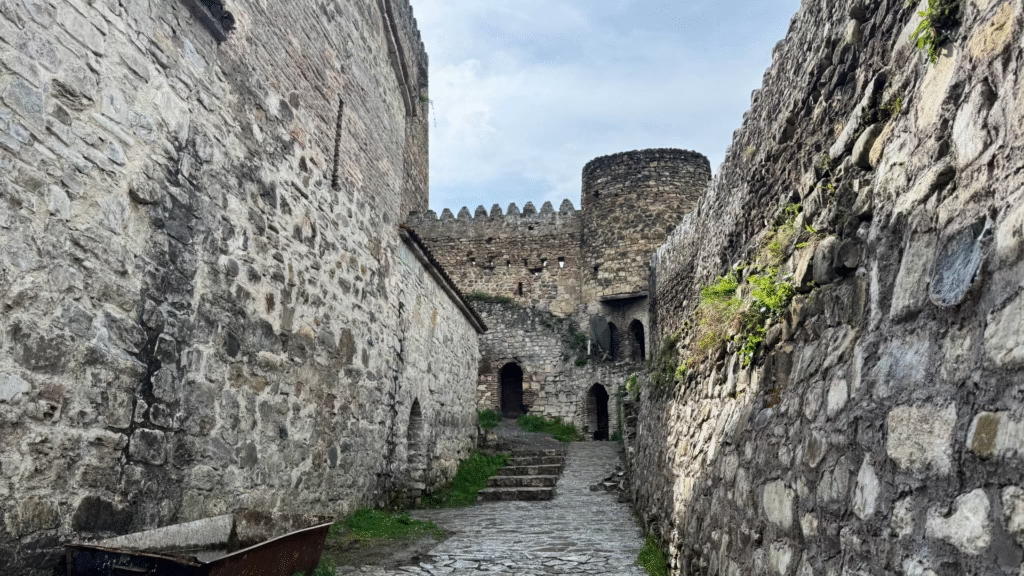
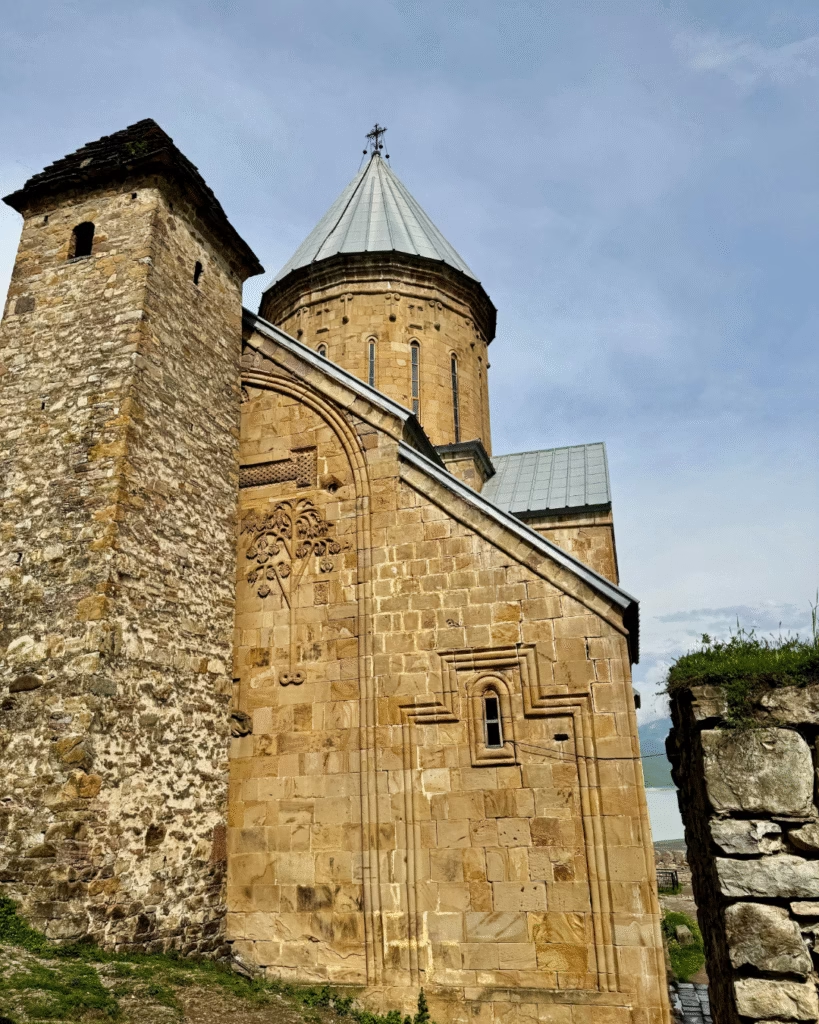
To get inside, there’s a decently steep walkway (less brutal than the hill at the previous church, thankfully). Once inside, you’re greeted by two striking churches standing at the heart of the courtyard, surrounded by crumbling stone and thick defensive walls. It’s a super popular tourist spot—and bonus: entry is completely free.
A woman from our educational group and I decided to climb one of the old watchtowers for a quick adrenaline rush. The staircase was tight—basically built for one-person, single file, no passing zone but worth it!
We didn’t linger for long, just about 20 minutes, since we had to make it to our hotel by 7 p.m. sharp for our wine tasting and dinner reservations. Still, Ananuri left an impression: dramatic, battle-worn, and full of old-world mystique.
Our arrival at the Radisson Tsinandali Estate felt cinematic. A narrow driveway opened to a lush, plant-covered building with a shallow fountain and stone steps leading to an expansive courtyard. My room was spacious, chic, and overlooked a serene pond with geese. After getting ready, I stumbled across a spinning brick wall (yes, you read that right) that led to a secret conference room while exploring before dinner—so cool!
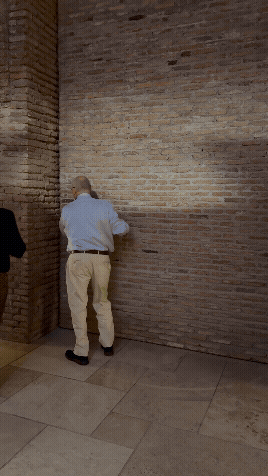
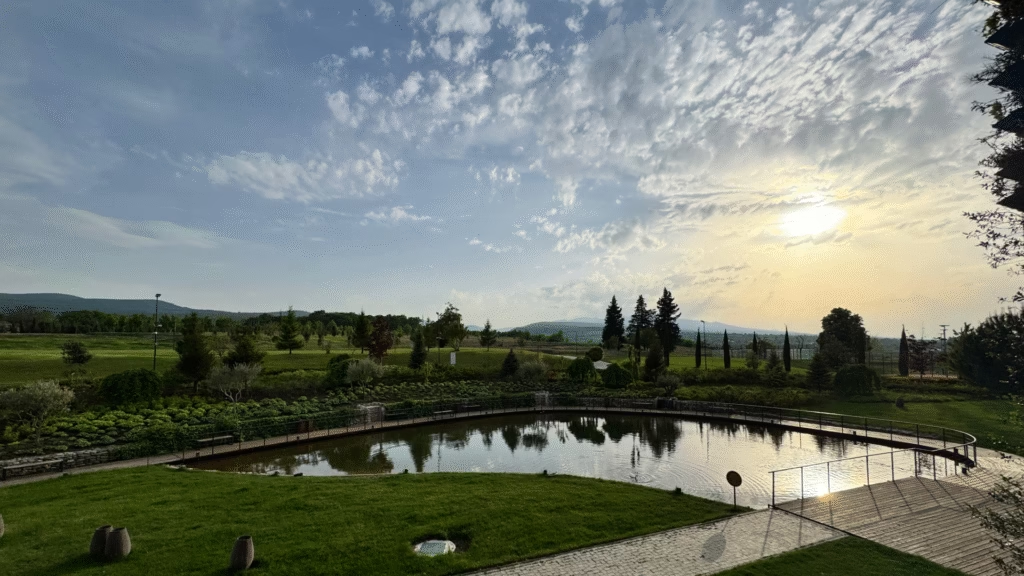
Wine tasting that evening was held in a moody underground cellar connected to Natella, the restaurant where we later dined. We sampled five Georgian wines—white, rosé, amber, red and a sparkling—while learning about the ancient Qvevri method of winemaking, recognized by UNESCO for its 8,000-year history. Earthenware vessels + buried fermentation = wine with soul.
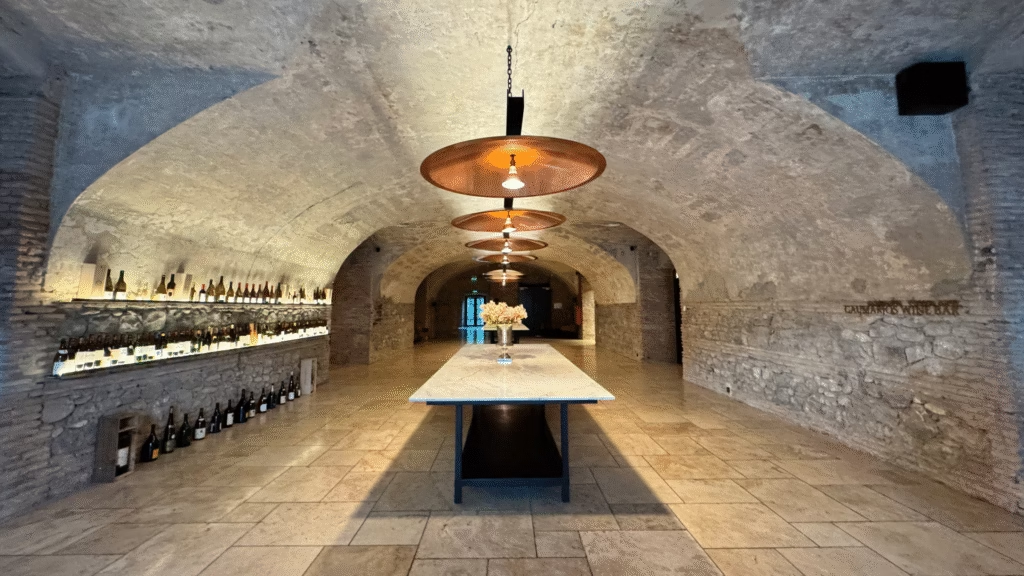
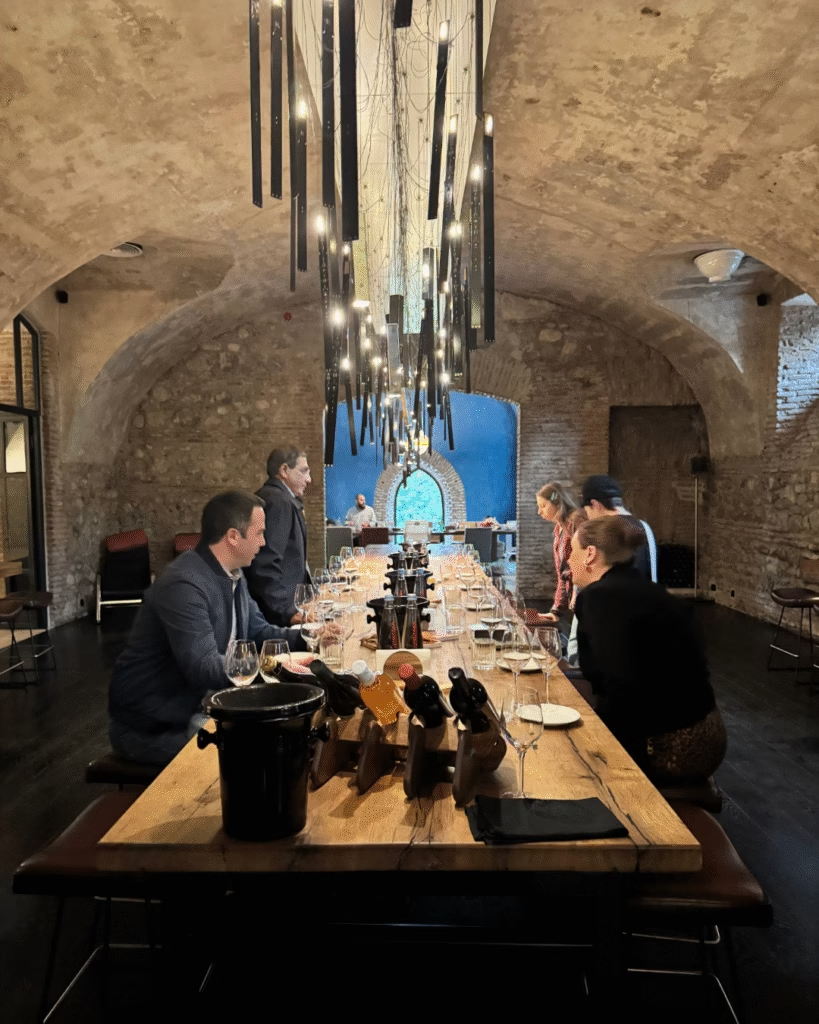
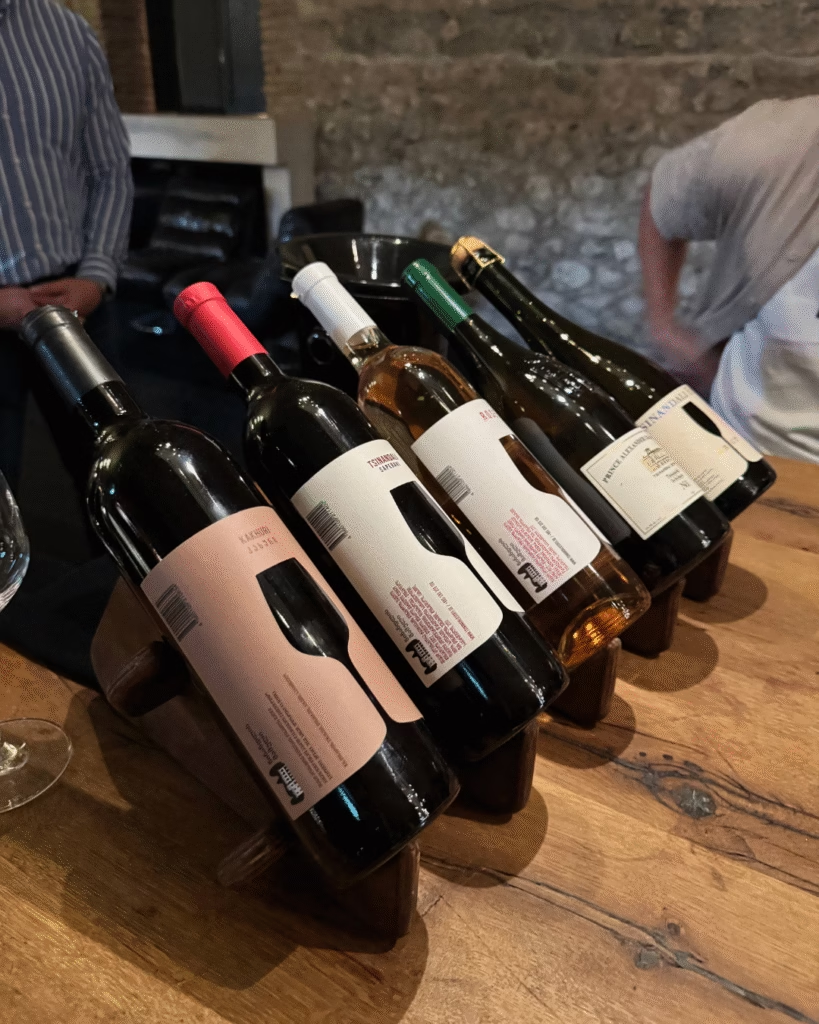
Dinner was another traditional spread: cheeses, salad, roasted potatoes, Pkhali (a vegetable pâté), and my entrée, Chicken Tabaka in a bubbling garlic cream sauce that smelled heavenly and tasted even better.
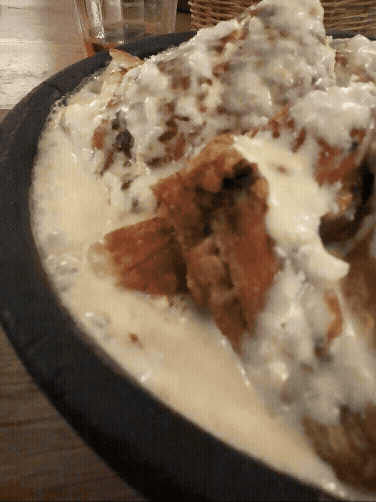
Later, we relaxed in the hotel’s cozy bar-library hybrid—books, pool table, games, and super friendly bartenders. It was a perfect end to the night.
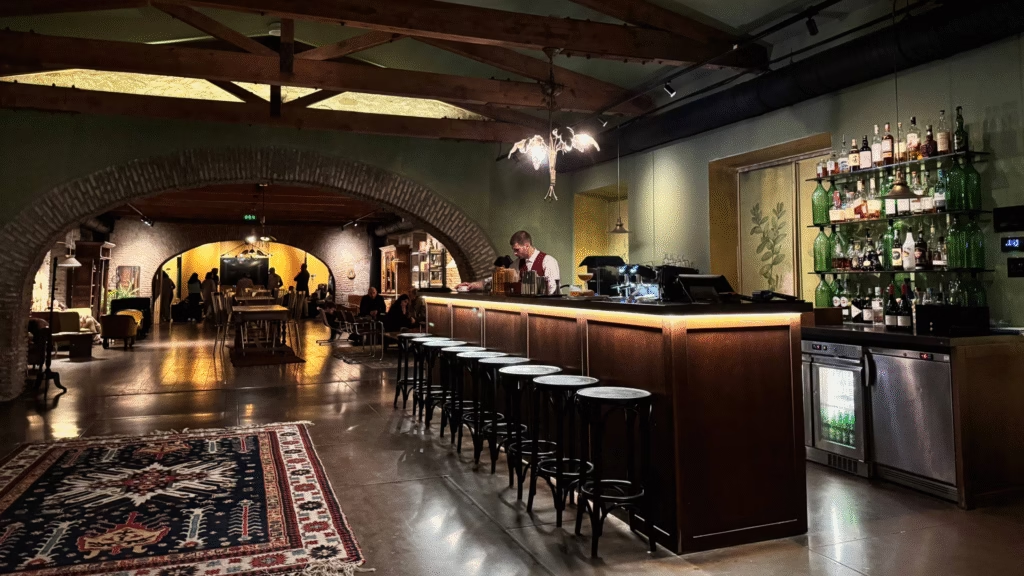
The next morning, we departed around 10 a.m. after a satisfying breakfast (plus a strong Turkish coffee I absolutely needed). We headed to Lopota Lake & Spa Resort for a hotel inspection on a massive 149-acres with its own lake, winery, stables, and even a jazz club. I finally ordered grilled trout for lunch after seeing so many people in group order it, and it was heavenly—crispy skin, delicate meat, fresh lemon. And of course, all the bread I could handle.
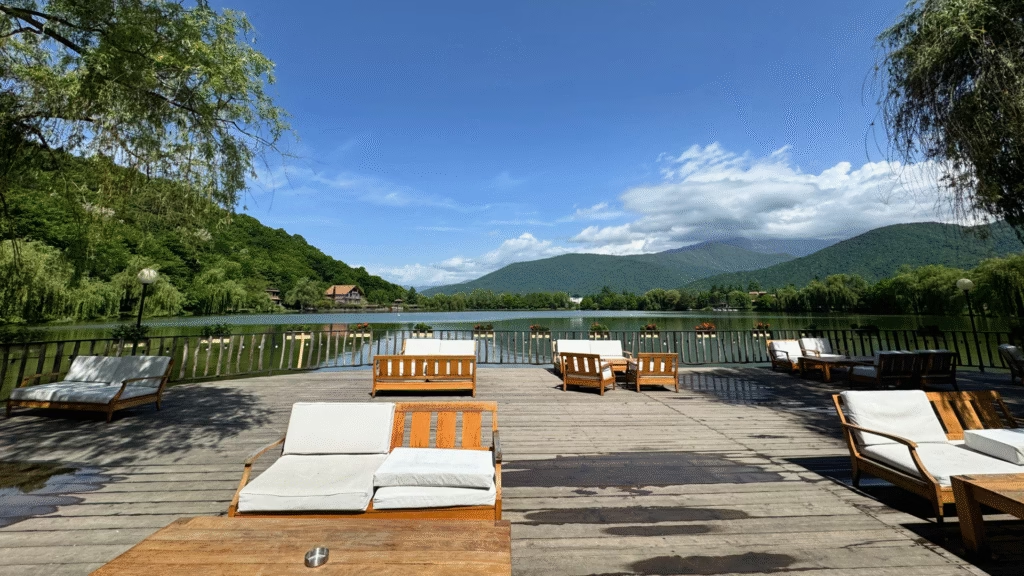
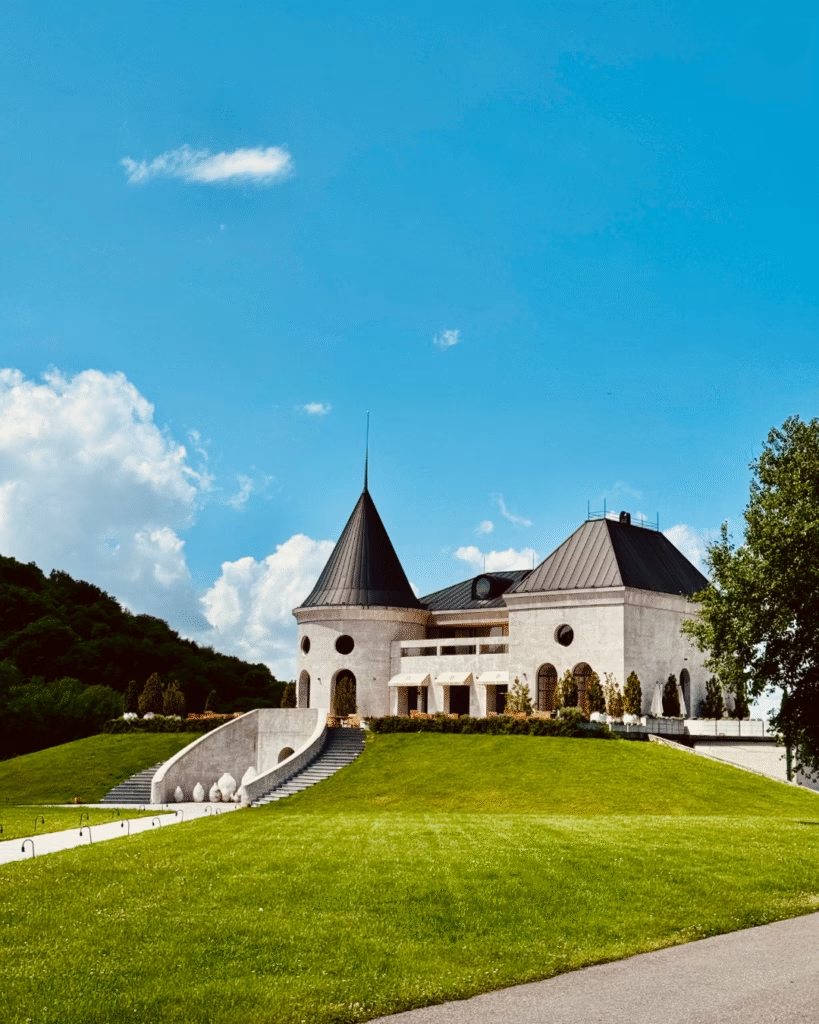
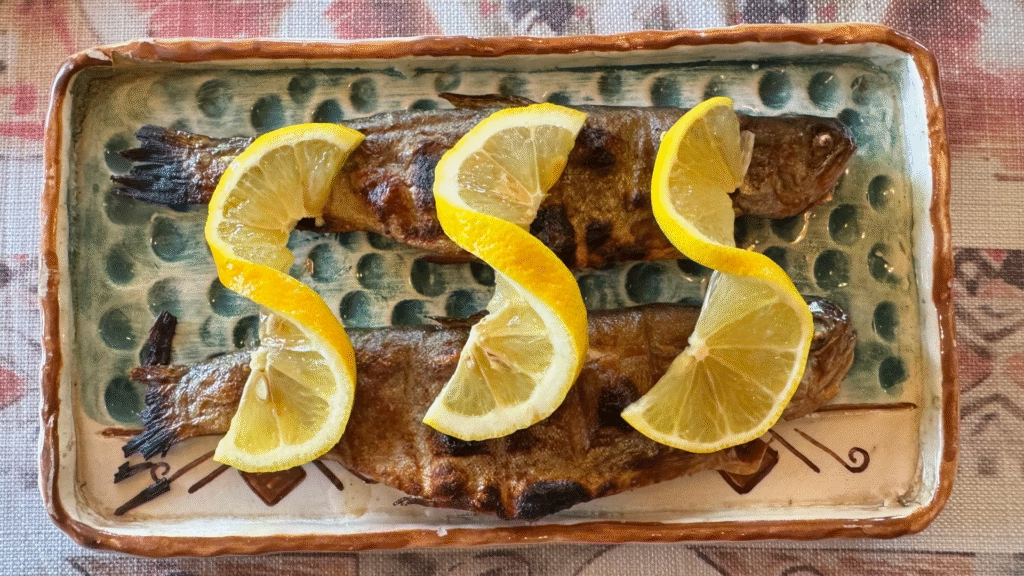
Later that day, we visited the Monastery of St. Nino at Bodbe, an active nunnery nestled among cypress trees with jaw-dropping views of the Alazani Valley (about an hour away from the border of Azerbaijan). After a short visit, we drove to a restaurant called Dergi for a hands-on Georgian cooking masterclass where we made khinkali (Georgian soup dumplings), shotis puri (Georgian Bread), and churchkhela (walnuts candied in concentrated grape juice). Surprise! I was bad at making the dumplings. Dinner followed with plenty of wine and yes, we got to eat what we made! The restaurant had a whimsical feel with hidden bathrooms behind the doors of an old wardrobe!
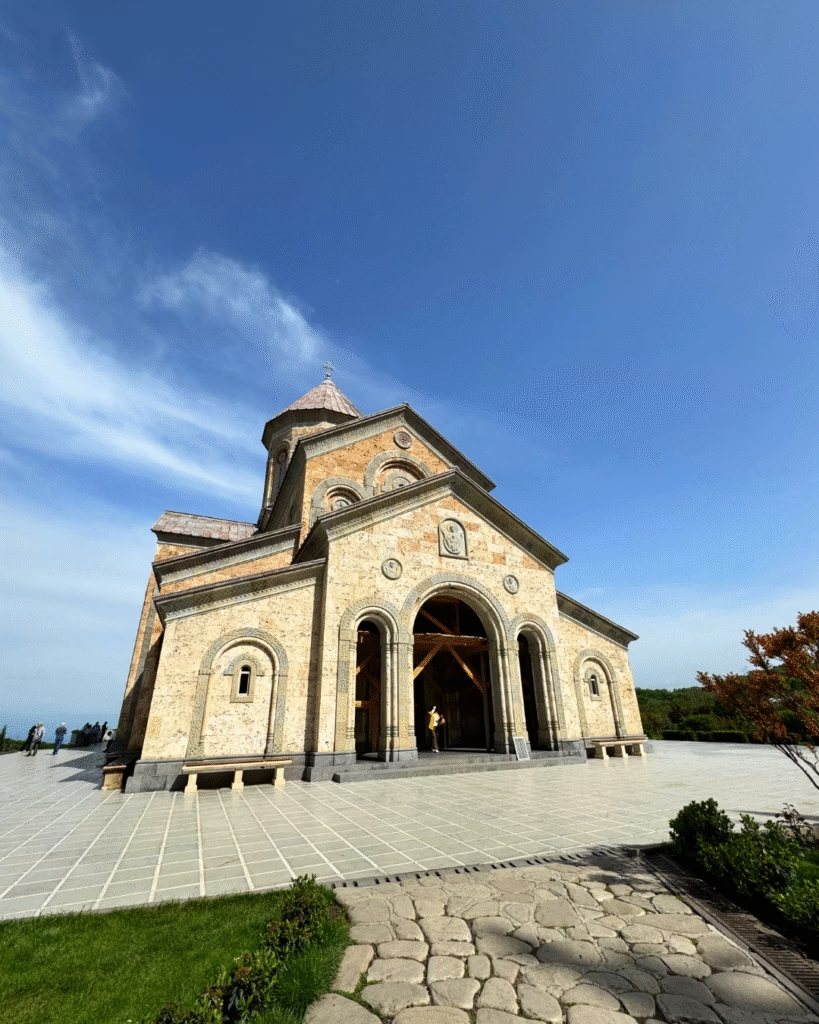
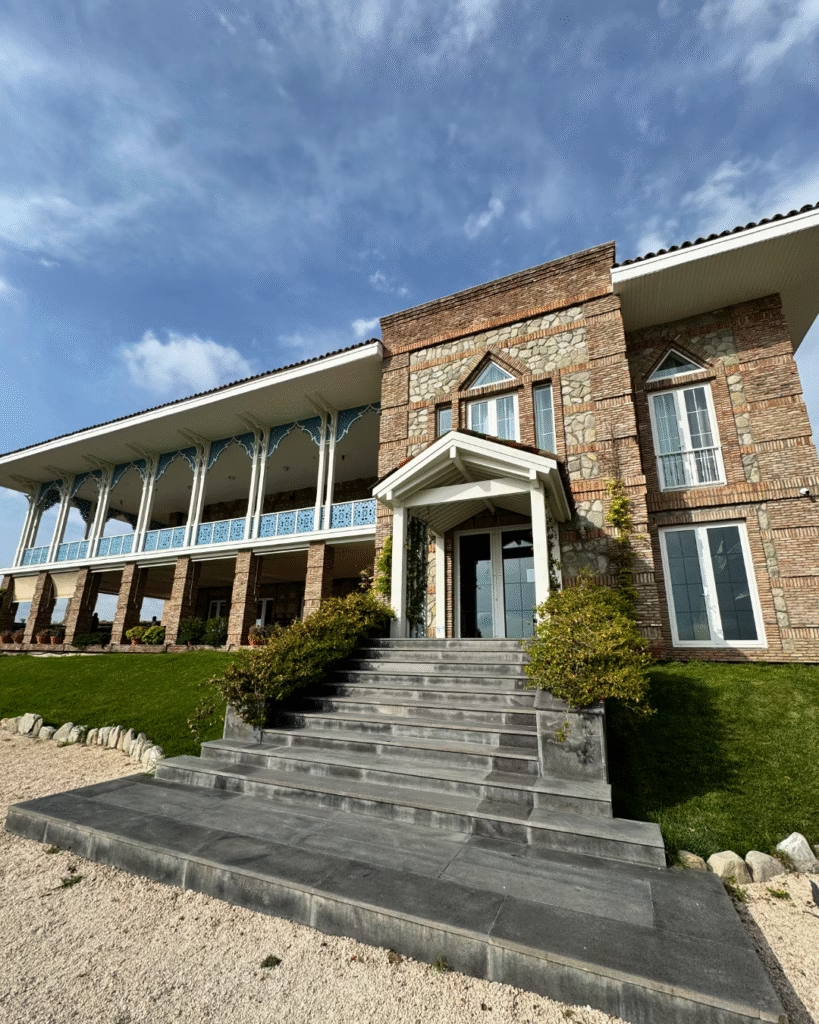
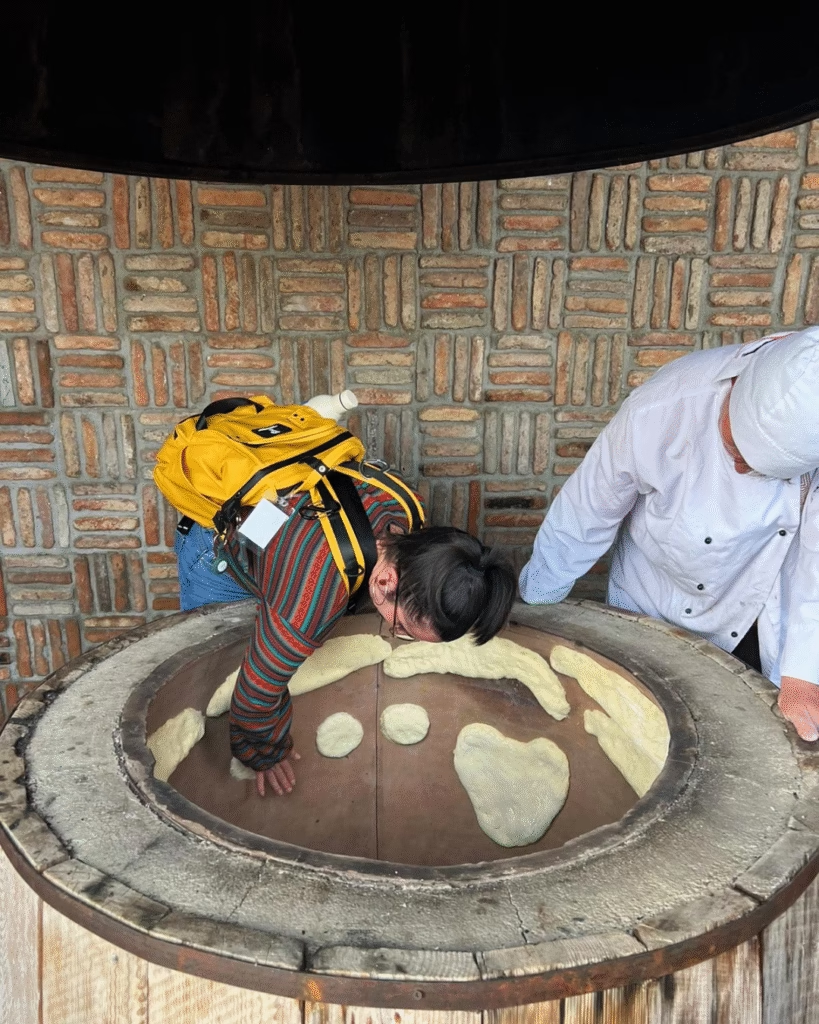
Right: Making some Georgian bread called, shotis puri.
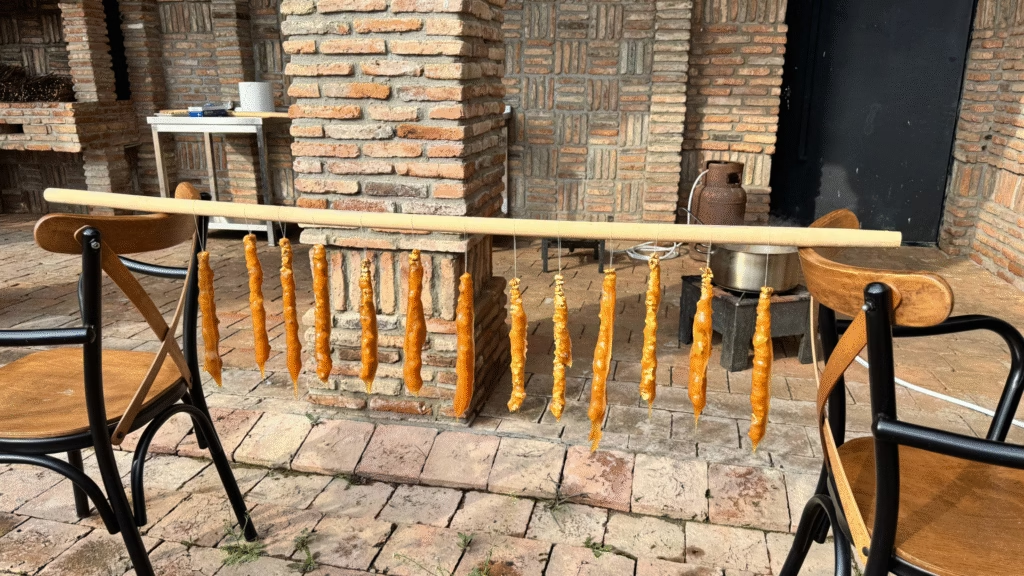
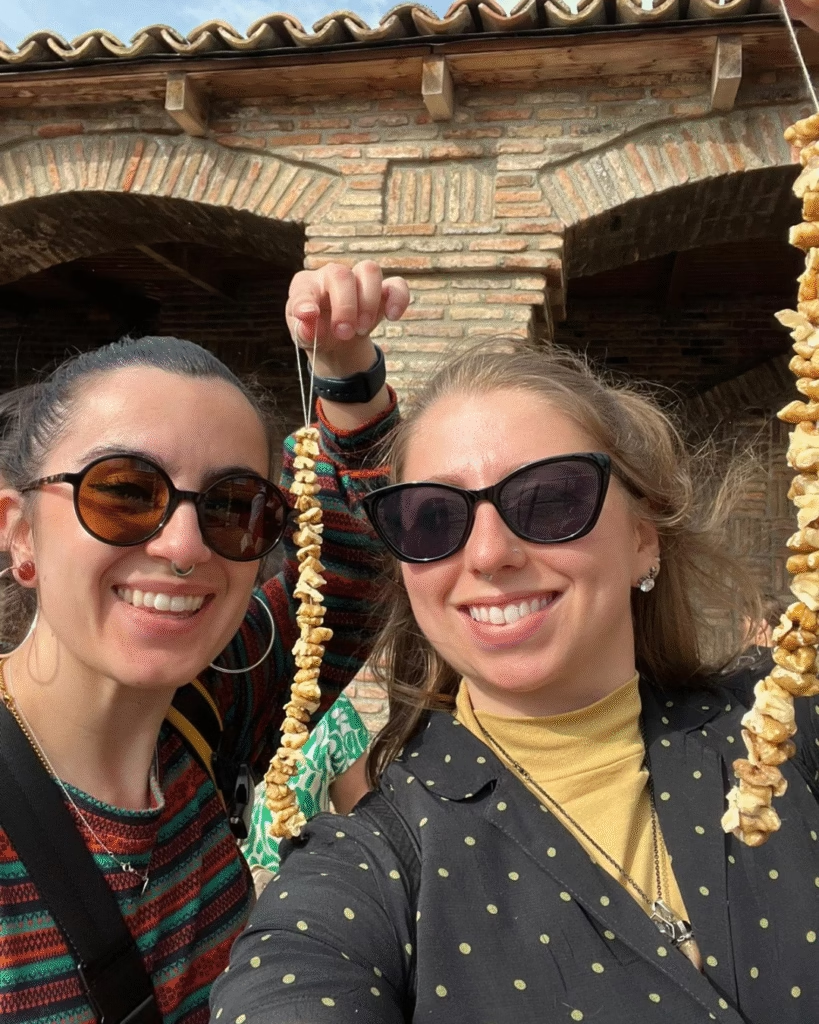
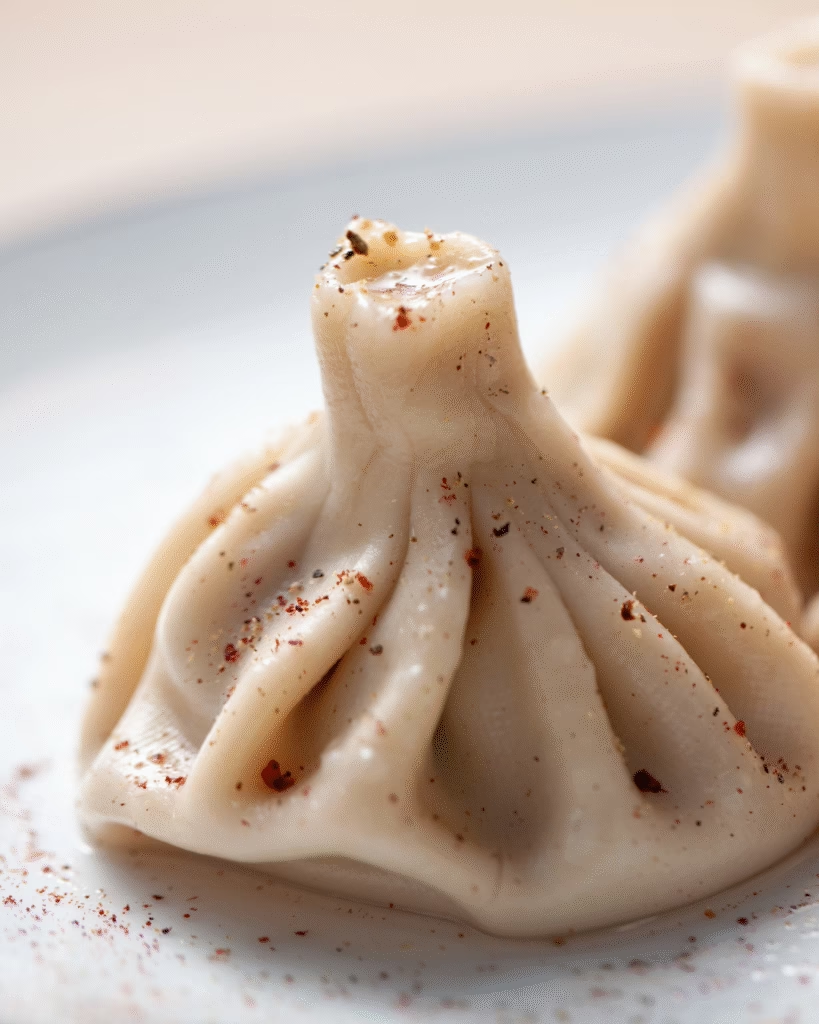
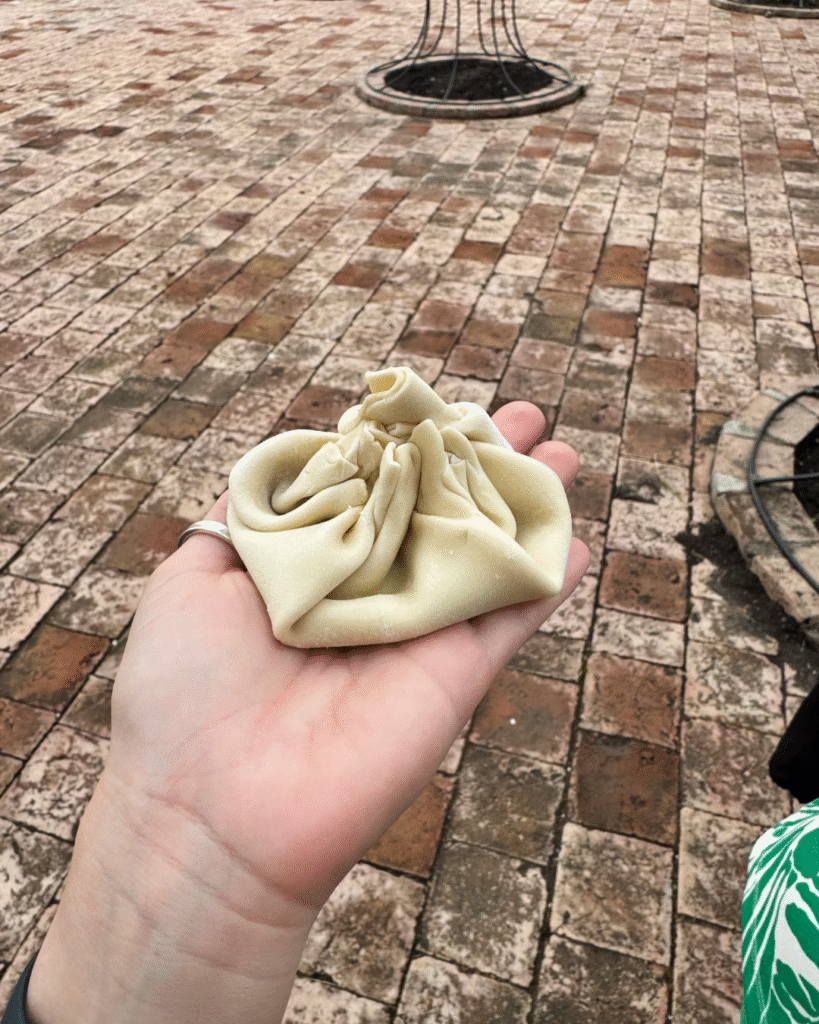
We returned to the Radisson Blu in Tbilisi late that evening, and of course, the friends I made had one last casino run. No winnings, but the laughs and free drinks were priceless. I also tried chacha for the first time, a fiery traditional spirit made from grape pomace. It’s like vodka with a vengeance—but drink it chilled which makes it easier to go down.
The next morning brought our B2B meetings with Georgian tour companies. We were expecting 10–15 suppliers but ended up meeting with 50 reps. (Insert sweat emoji.) However, it was really amazing to talk to local companies who run tours all over Georgia and the neighboring countries of Turkey and Azerbaijan.
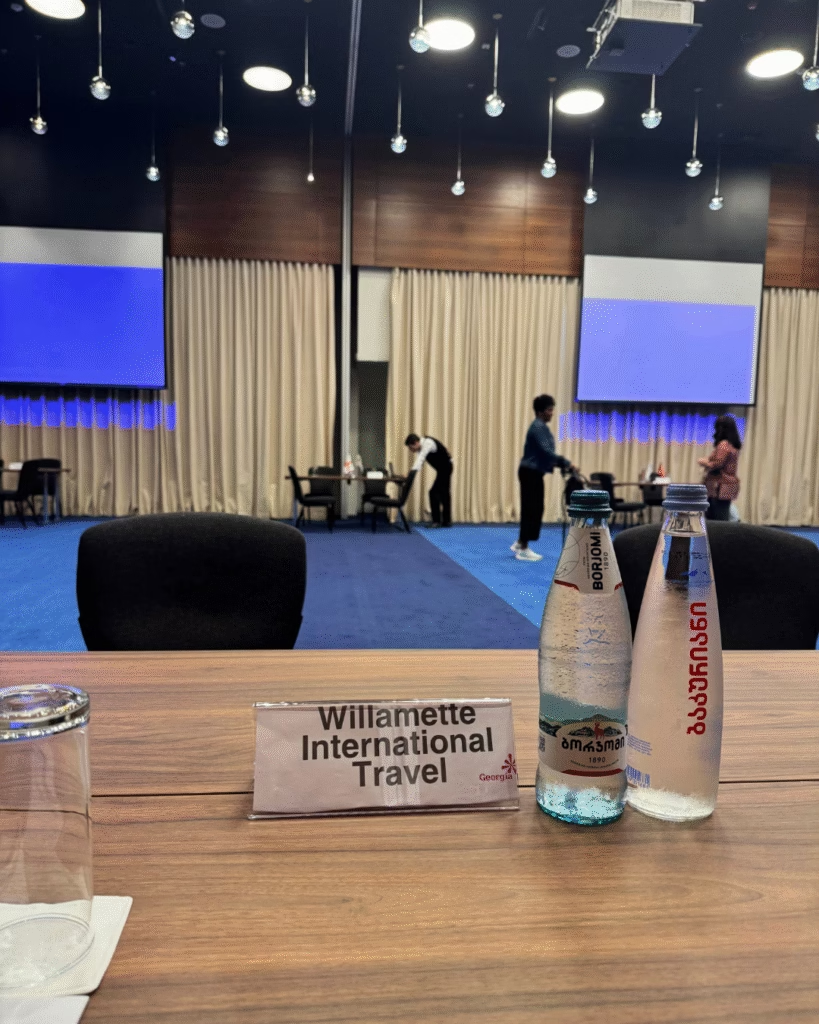
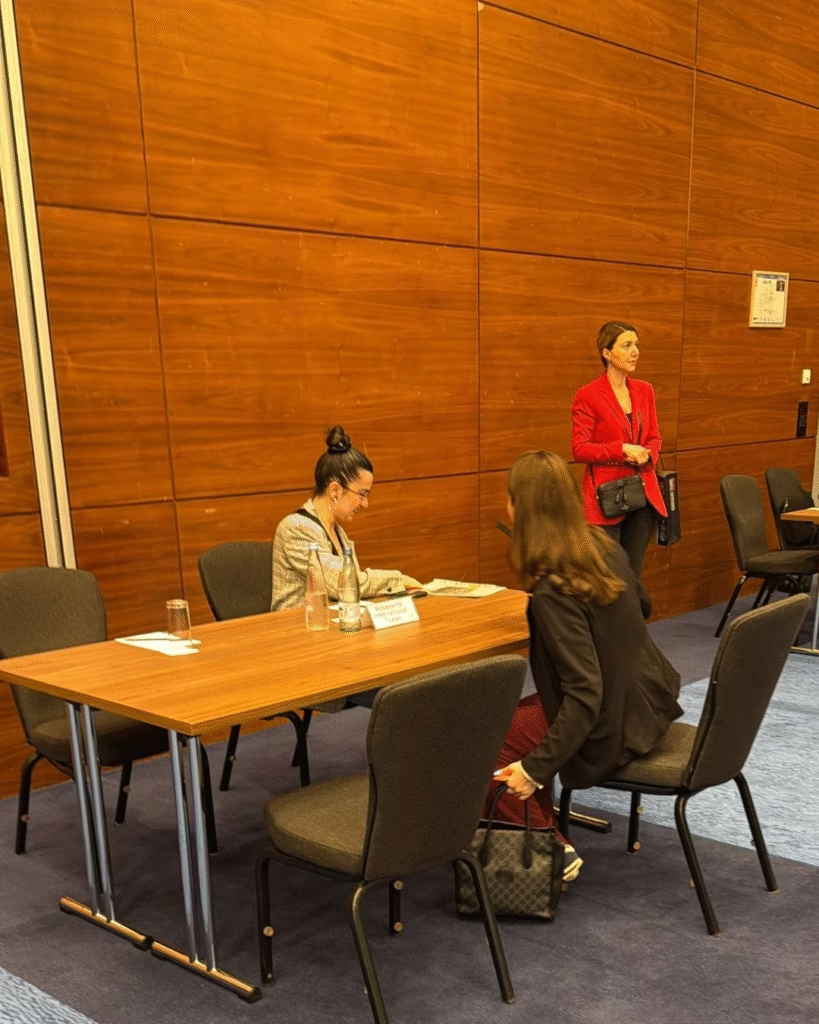
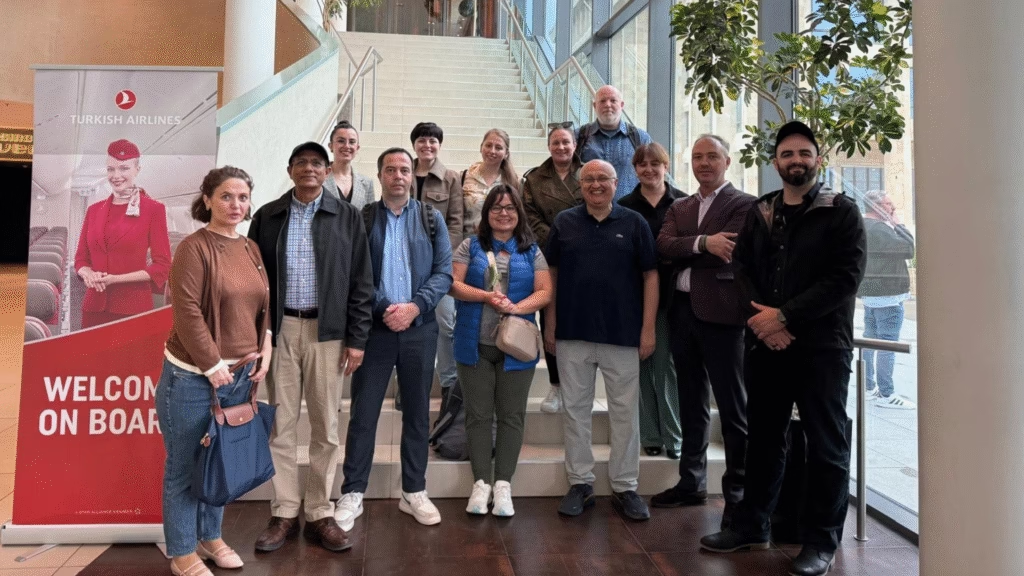
That evening we joined a walking tour through Old Tbilisi followed by a wine tasting at the Tbilisi Wine Museum, which is located in a 17th-century building literally built over the river. You can still hear the water flowing under the floorboards! The museum is full of winemaking relics and ends with—you guessed it—more wine, cheese and churchkhela.
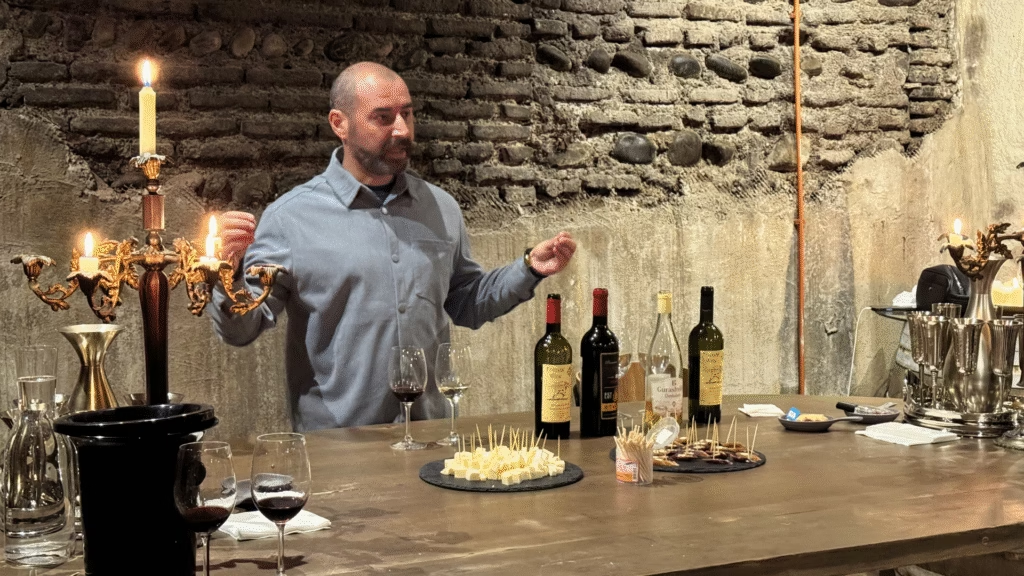
Old Tbilisi has so much to offer: cozy restaurants, stylish shops, buzzing bars, cathedrals, the iconic Bridge of Peace in Rike Park, and even a fragment of the Berlin Wall. We stopped at the Median Bazar, a tunnel marketplace for artisan goods, then passed the sulfur bathhouses—very “18th century spa day.”
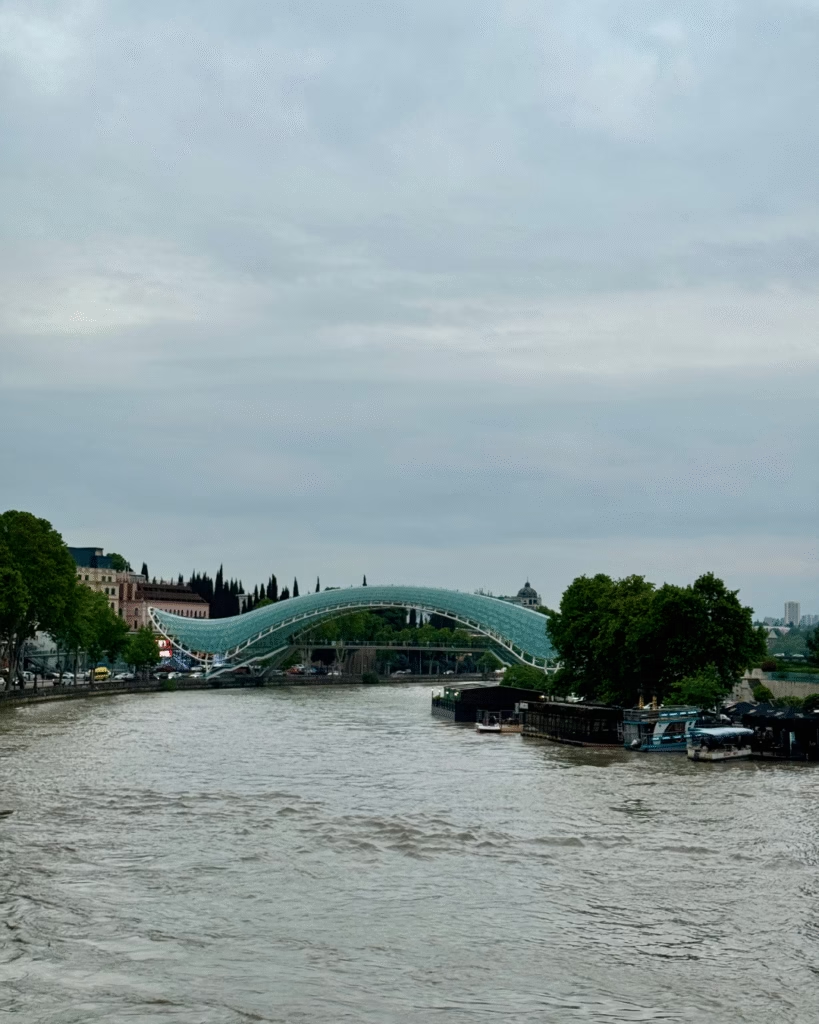
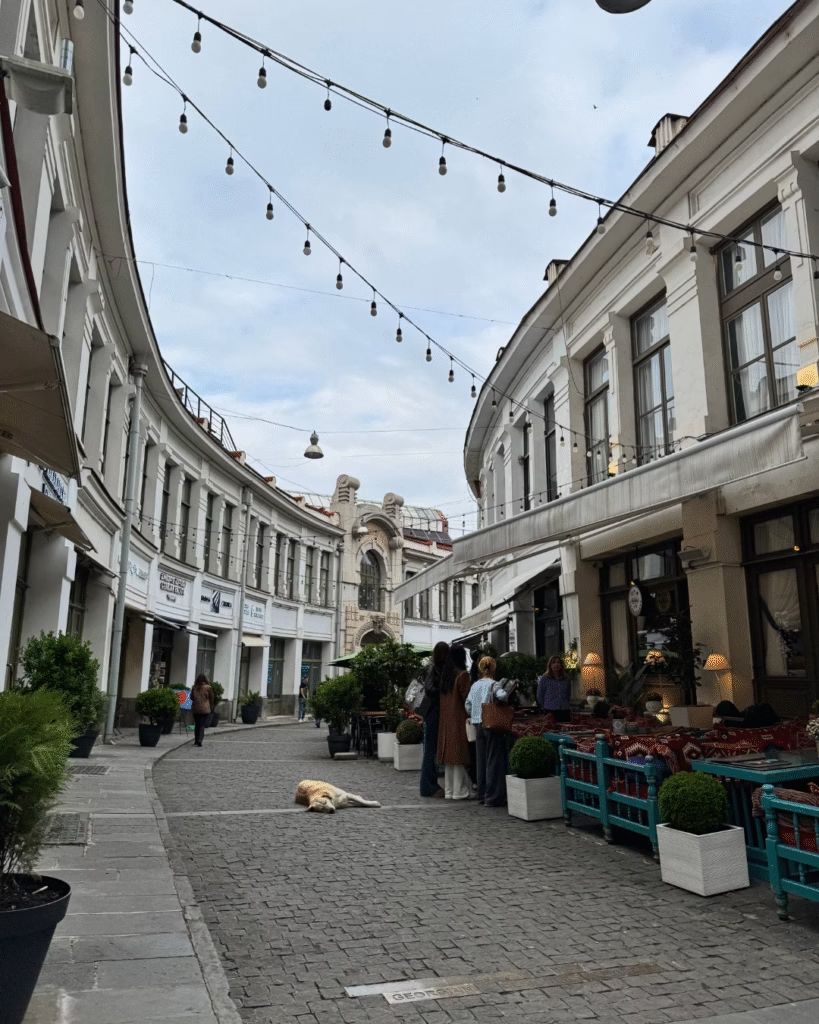
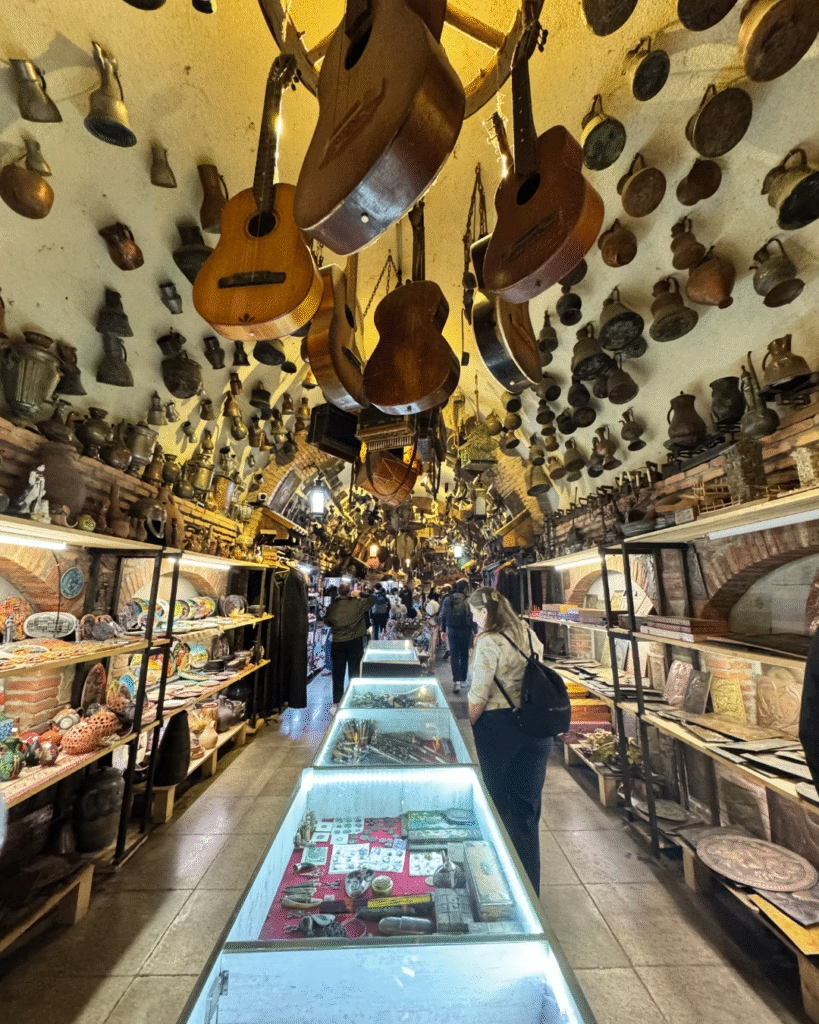
Left: Inside the Median Bazar
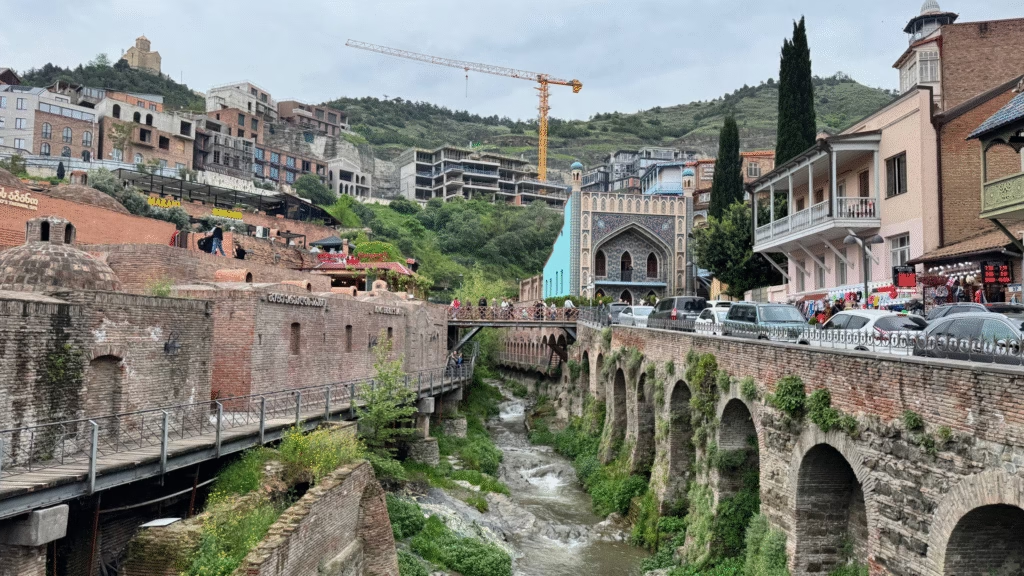
Our farewell dinner was at Ethnographer, a lively restaurant with folk dancing, traditional costumes, and yet another epic Georgian spread. One table of men kept giving Supras— long, poetic toasts led by a Tamada (toastmaster). We couldn’t stop laughing at the bored expressions of the women at their table, but it was gold-star people watching.
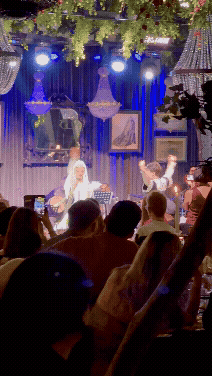
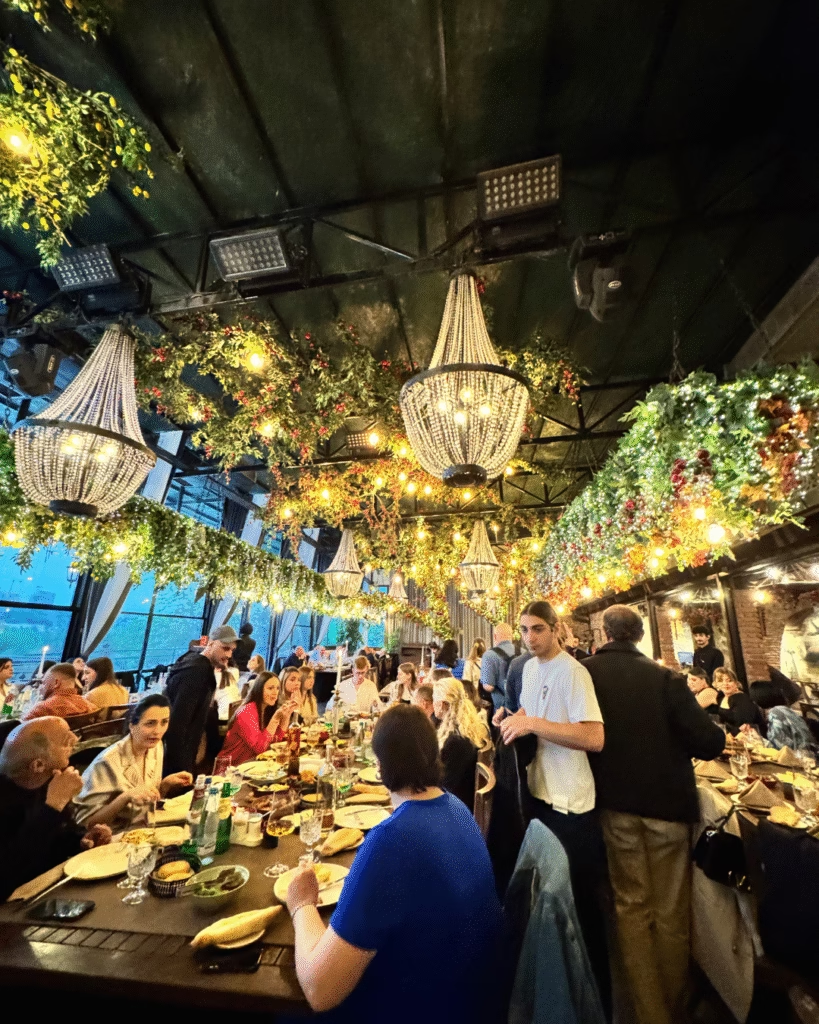
Since the night was still young, my new friends and I took a final stroll through Tbilisi. The city was buzzing and felt totally safe, even late at night. Crosswalks are tricky to find, but there are pedestrian tunnels underground (complete with buskers—very NYC). Georgian drivers, though? Absolute chaos. No real care for lanes and very few stoplights so keep an eye out. Here, you’ll see cars with steering wheels on either side, it just depends on where the vehicle was imported from. Also, Uber doesn’t exist here, but Bolt is the app of choice. Yandex Go is also available, but many locals avoid it due to its Russian ownership.
To cap the night, one of my friends took us to the Rustaveli metro station—60 meters (197 feet!) underground and home to the world’s sixth-longest escalator. We didn’t ride the subway, just the epic escalator (it took 2 minutes both ways!). Our last bar stop was The Wheels, a chill local dive where we befriended the wildest local dude and closed the place down.
This trip was truly one for the books! Every stop was layered with history, personality, and warmth. My only wish was that we had some free time to explore the towns independently. Still, Georgia surprised me in every possible way!
If you love history, wine, food, architecture, nature, nightlife, lazy street dogs—or cats—you’ll find something here. It’s still under the radar, so go now while it’s still beautifully untouched and deeply authentic.
Resources
Ready to experience your own Georgian adventure? Contact our excellent travel experts at 503-224-0180 or email inquiry@wittravel.com.
Don’t miss a post! Subscribe to our blog!

